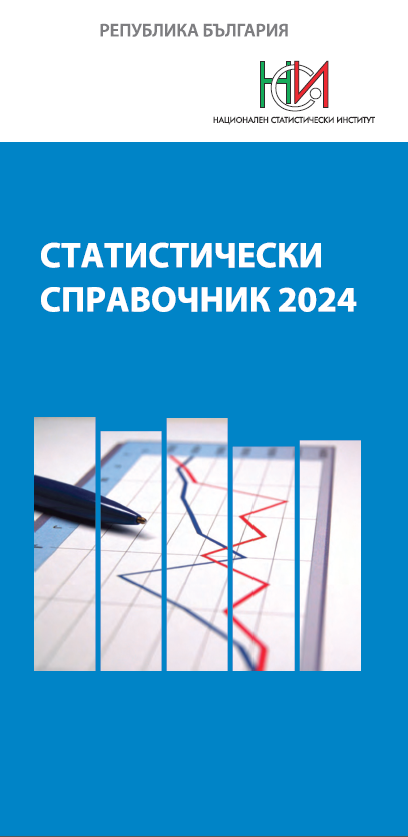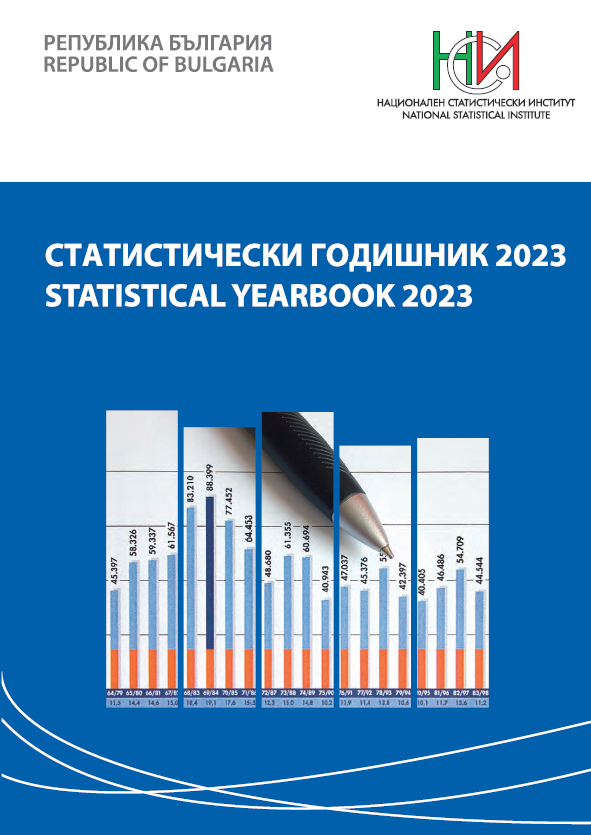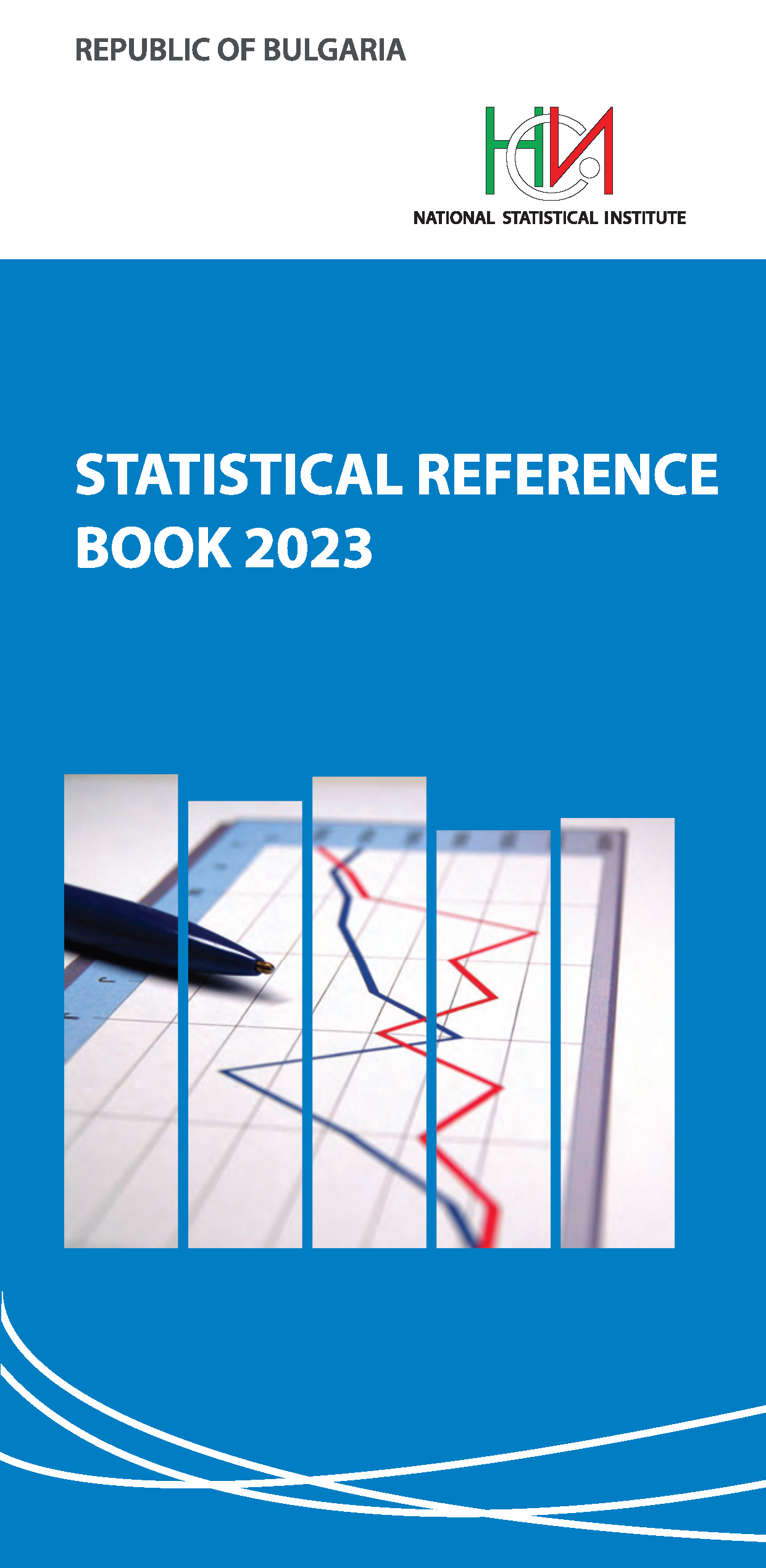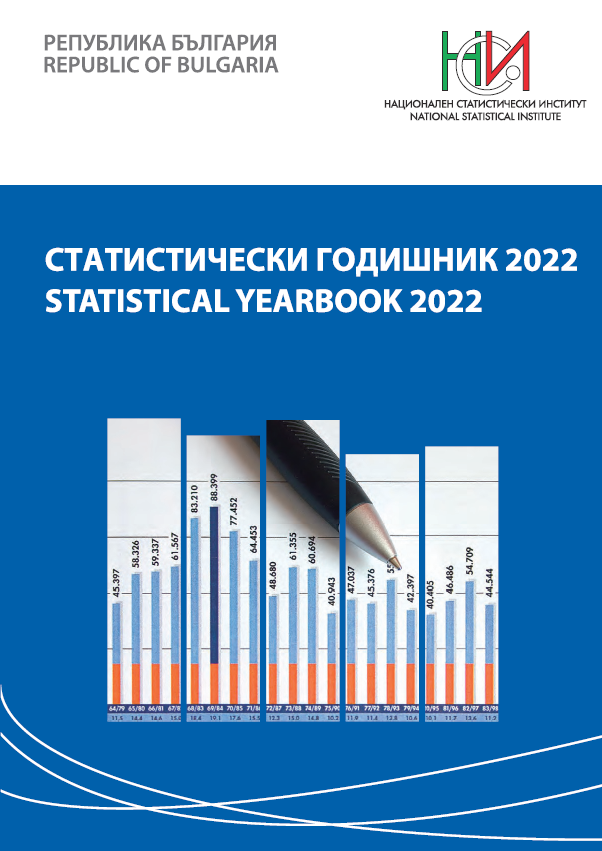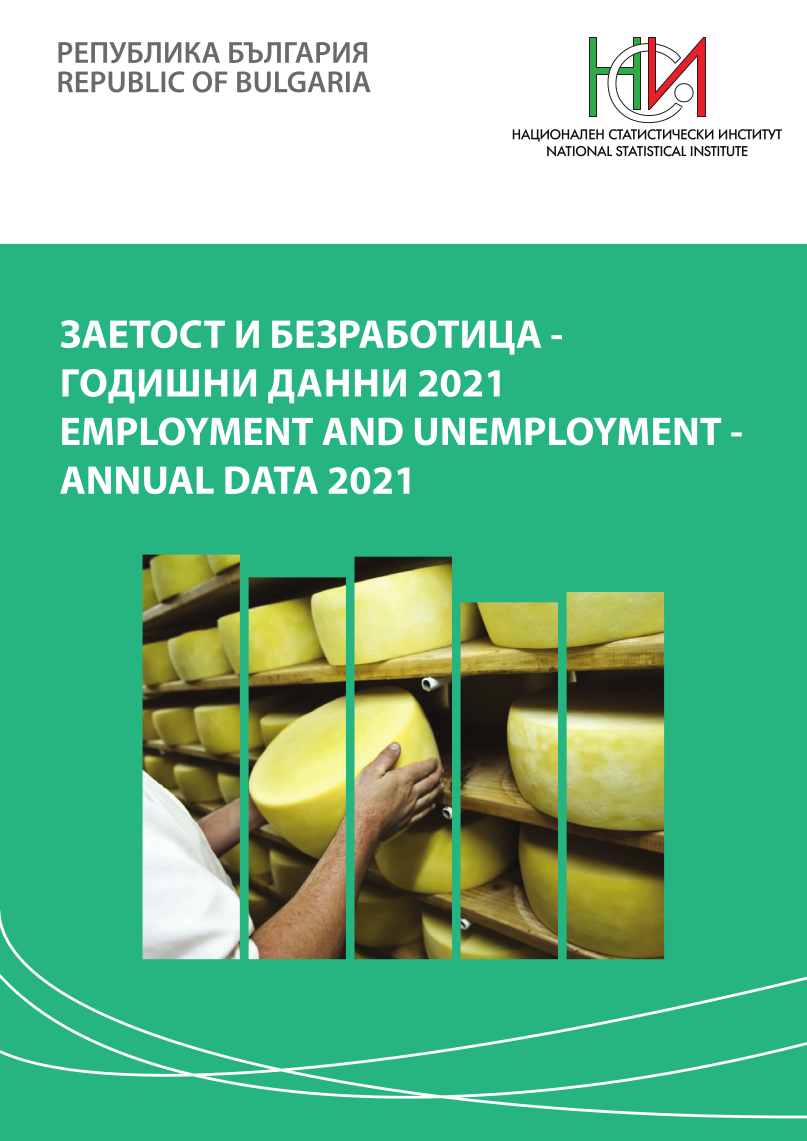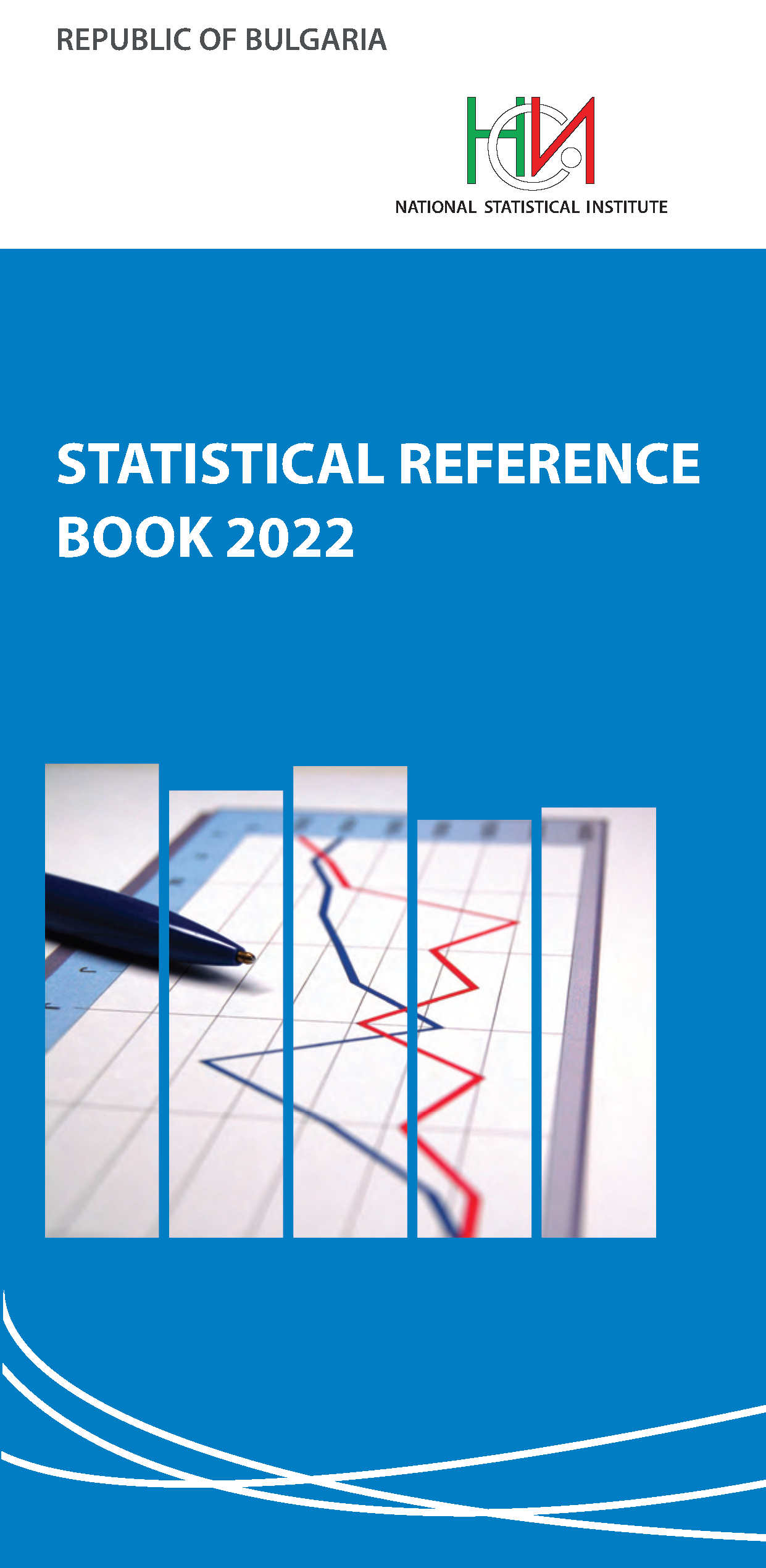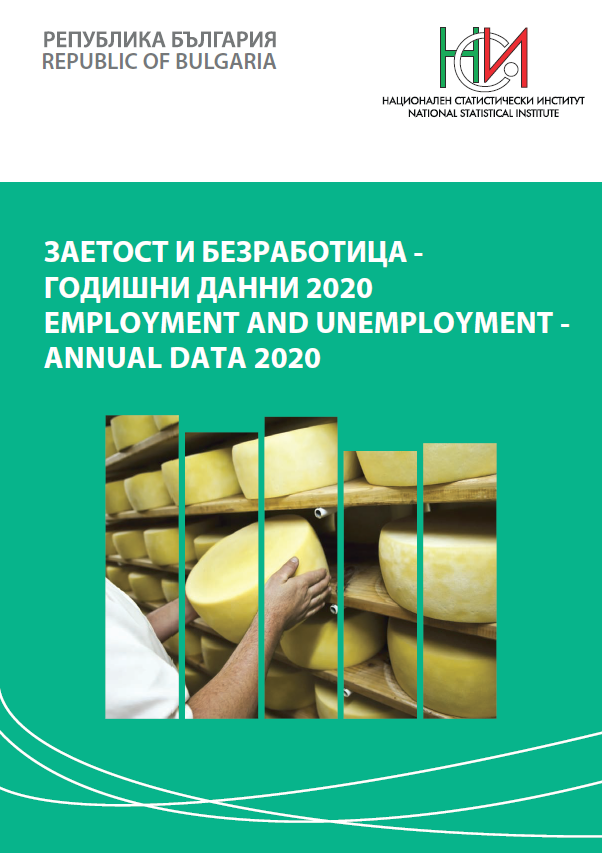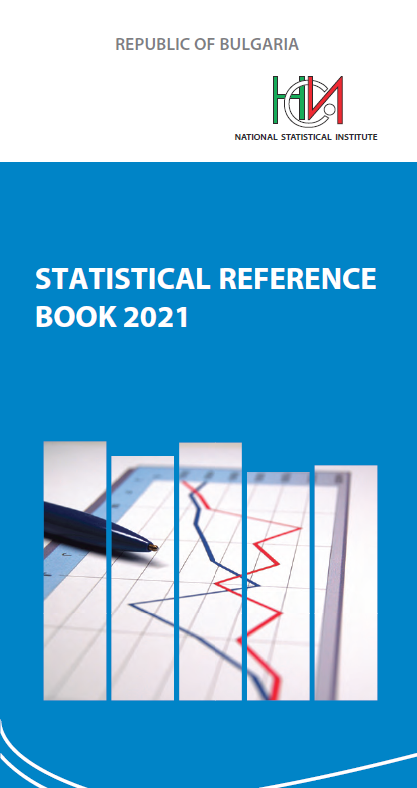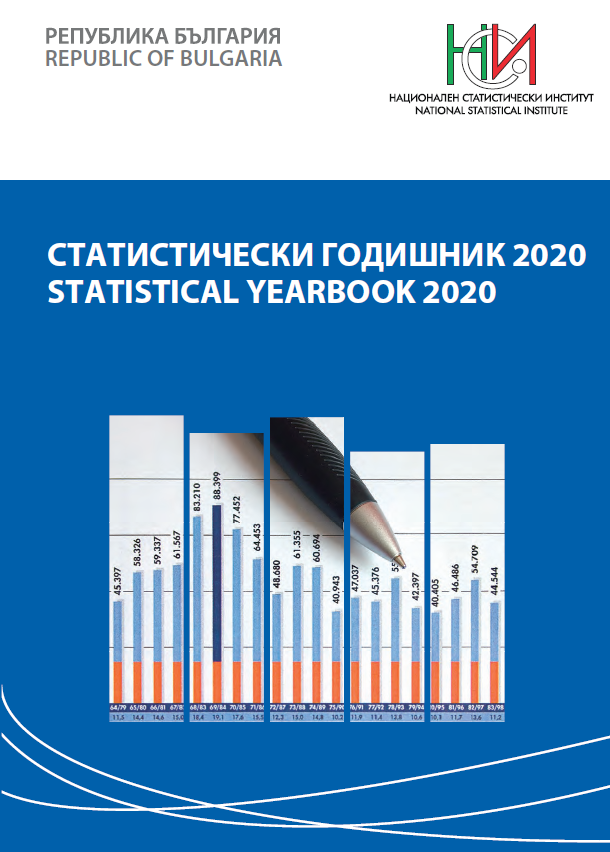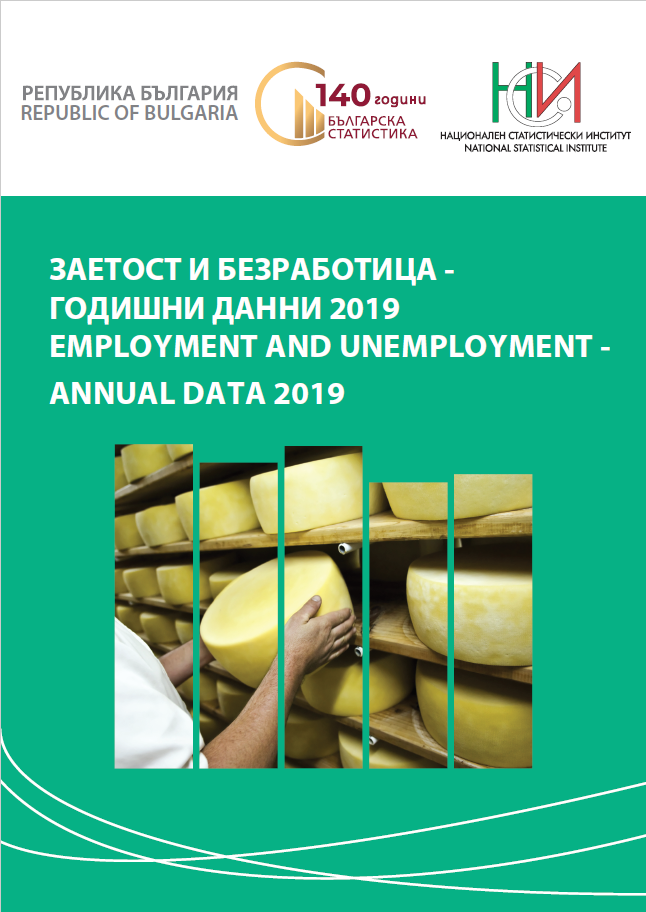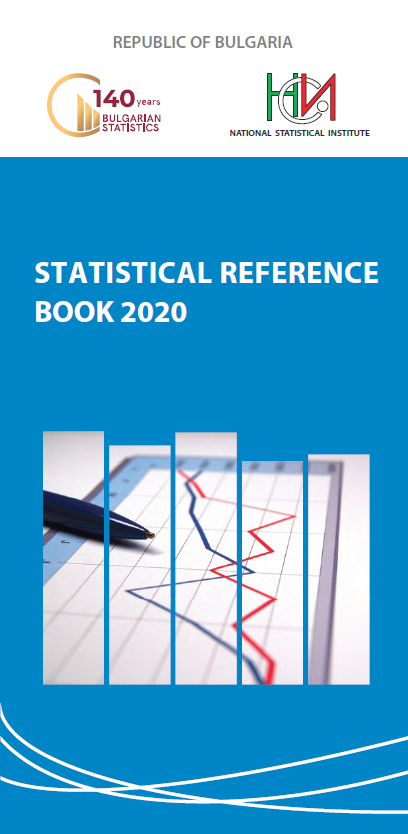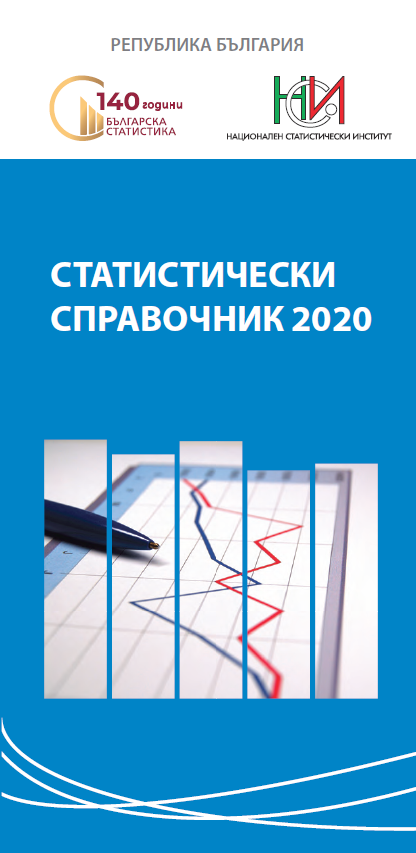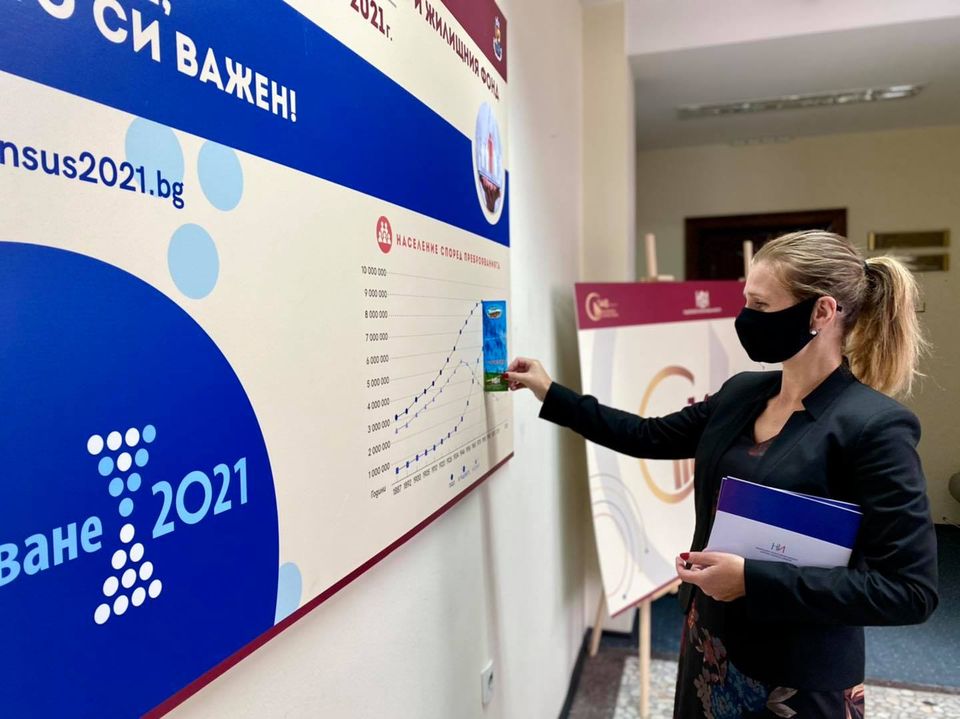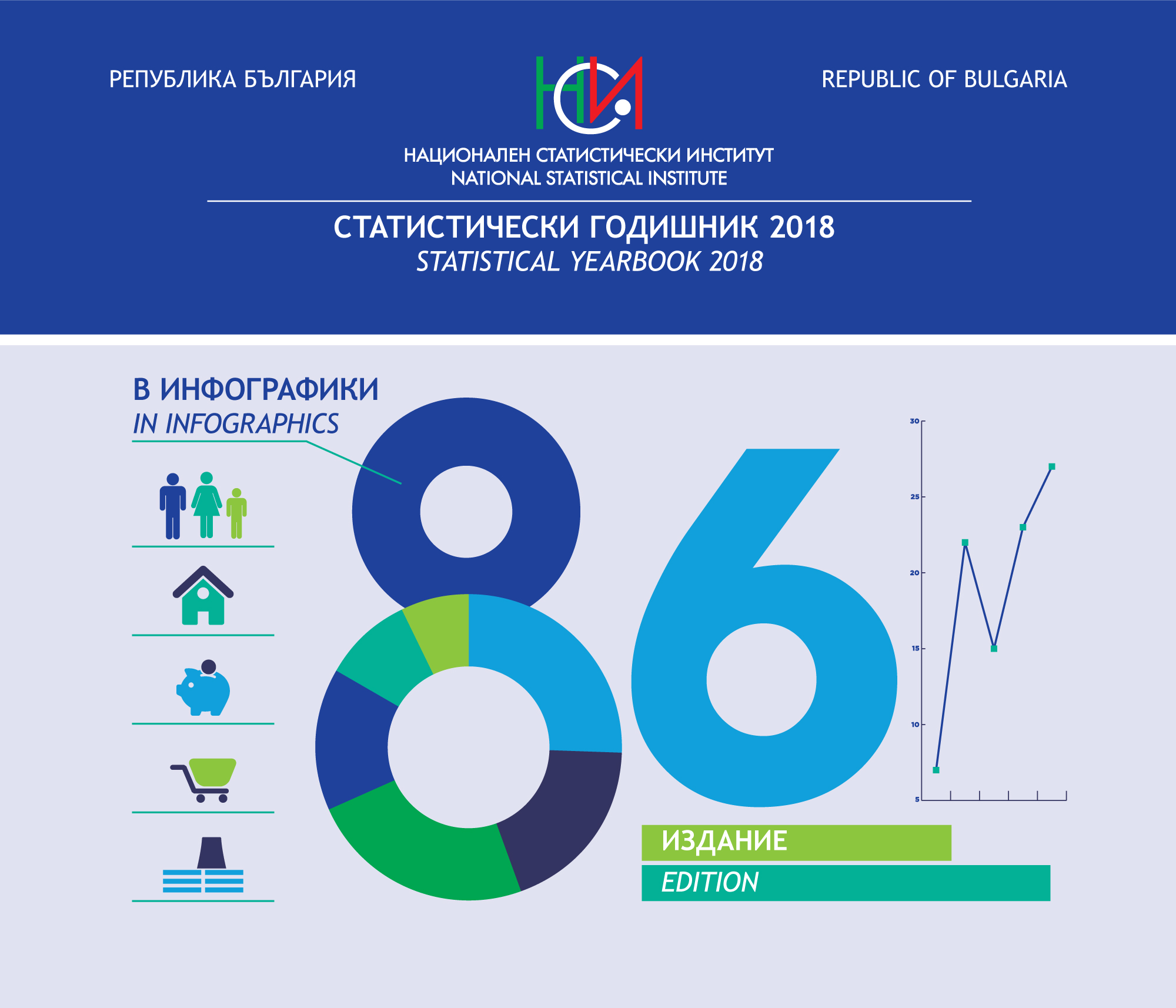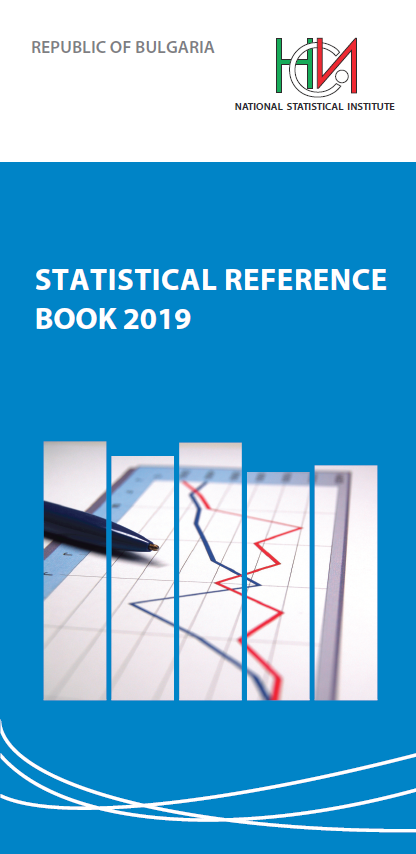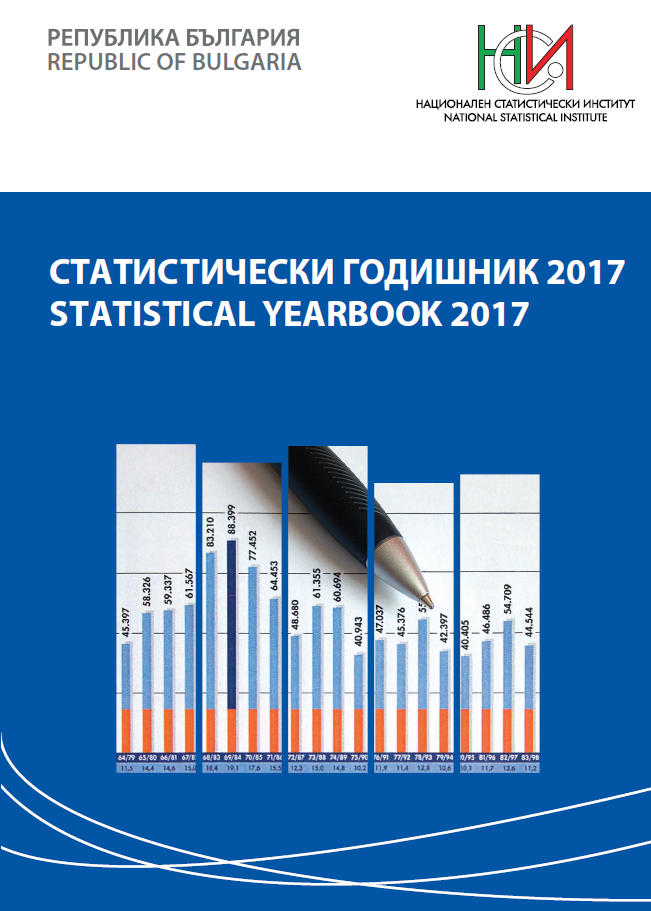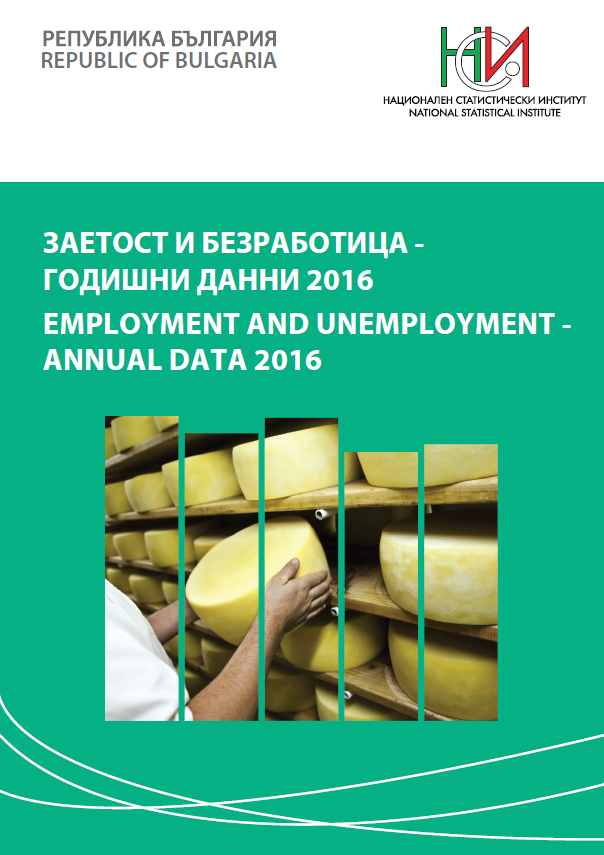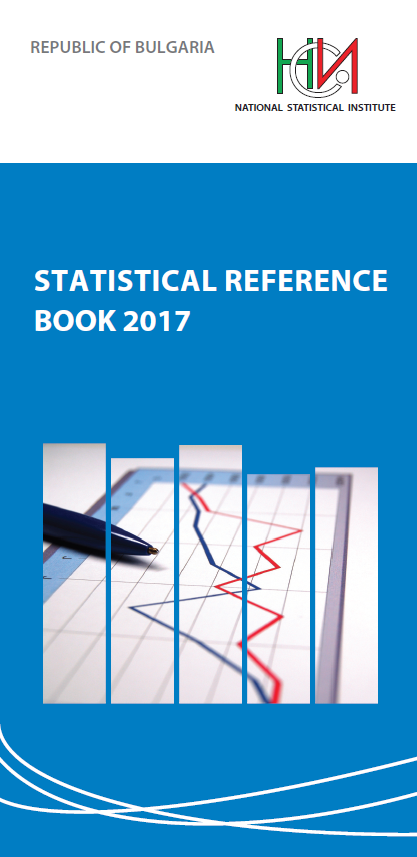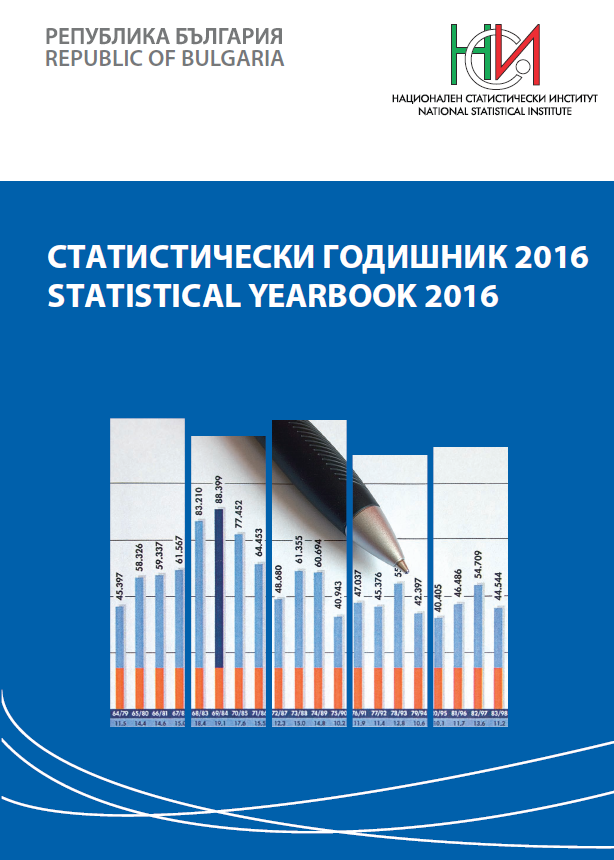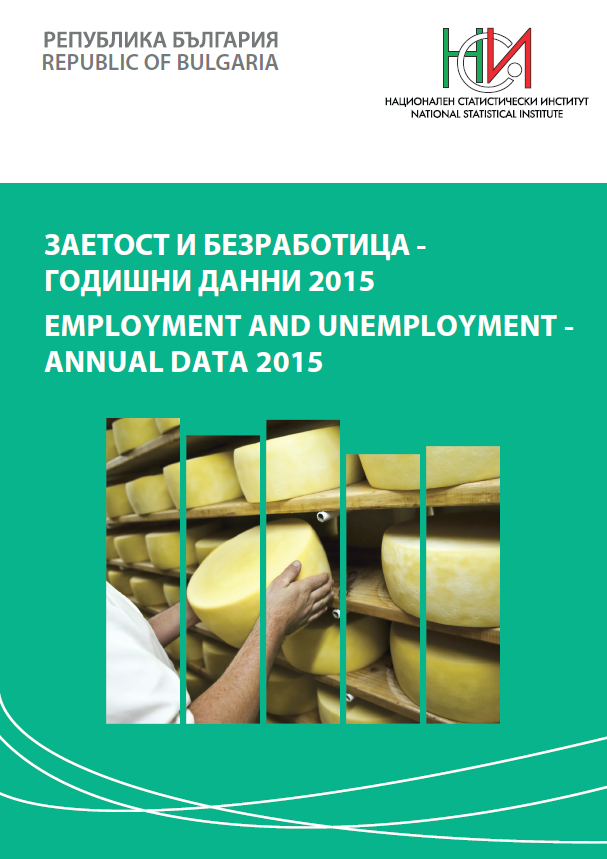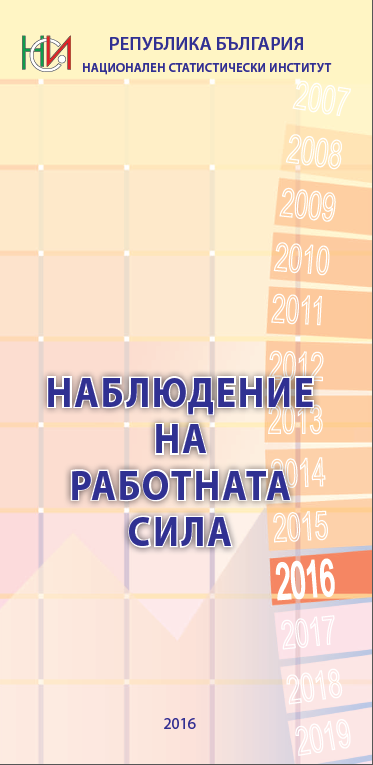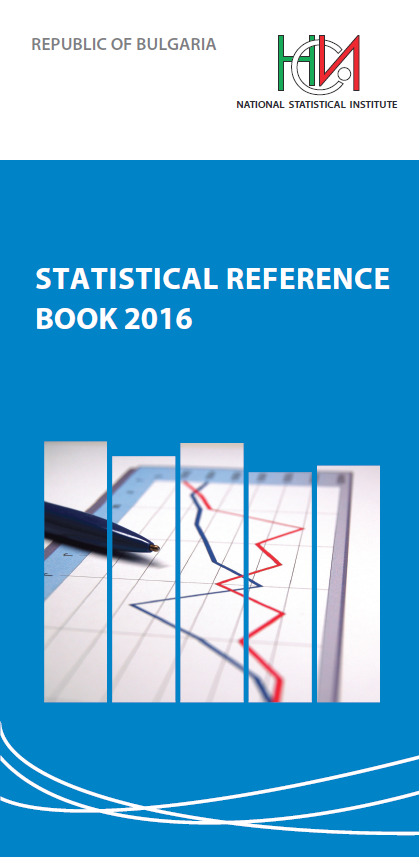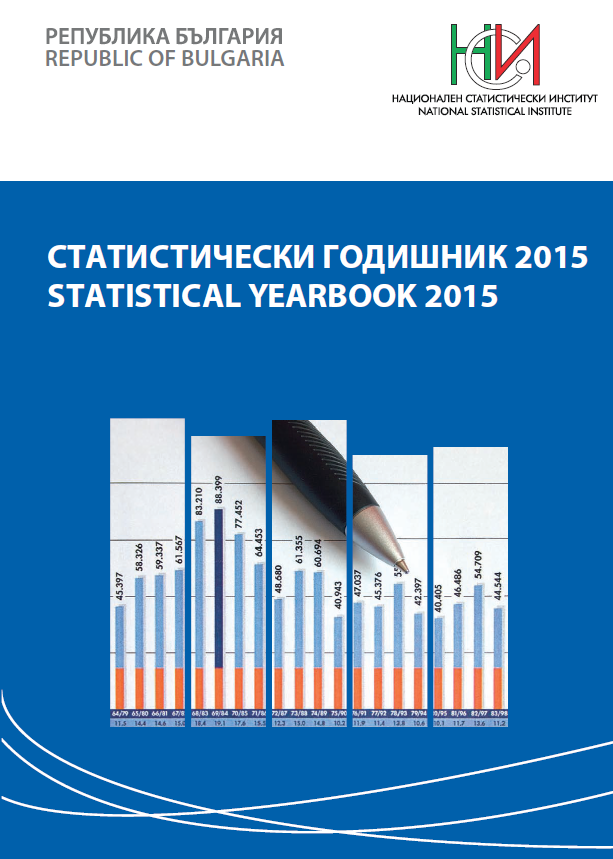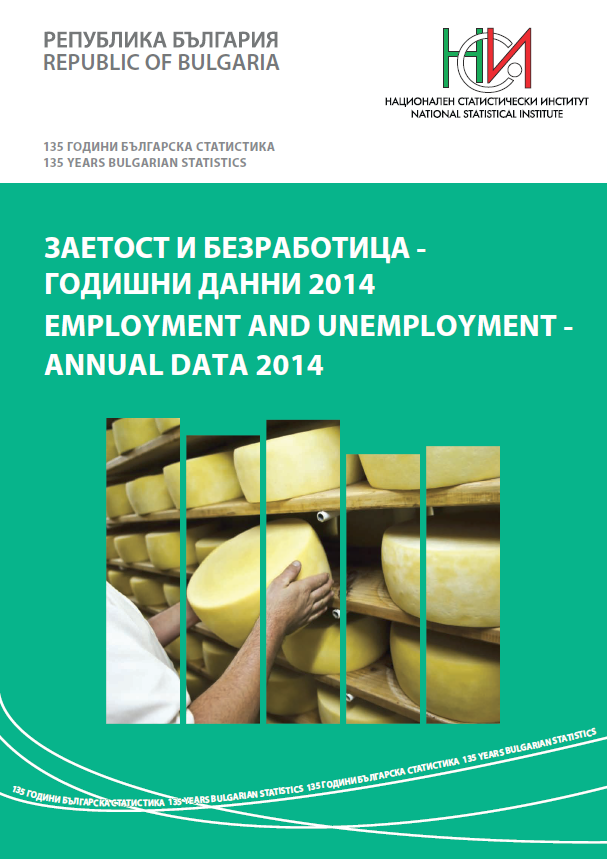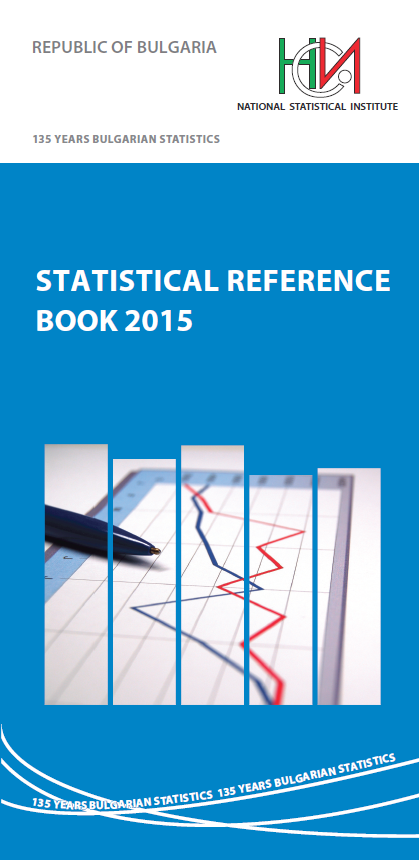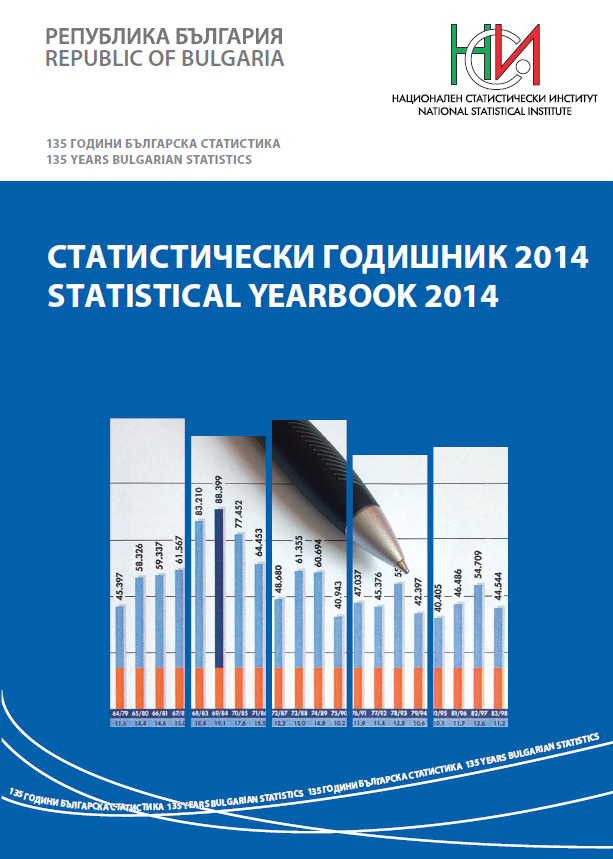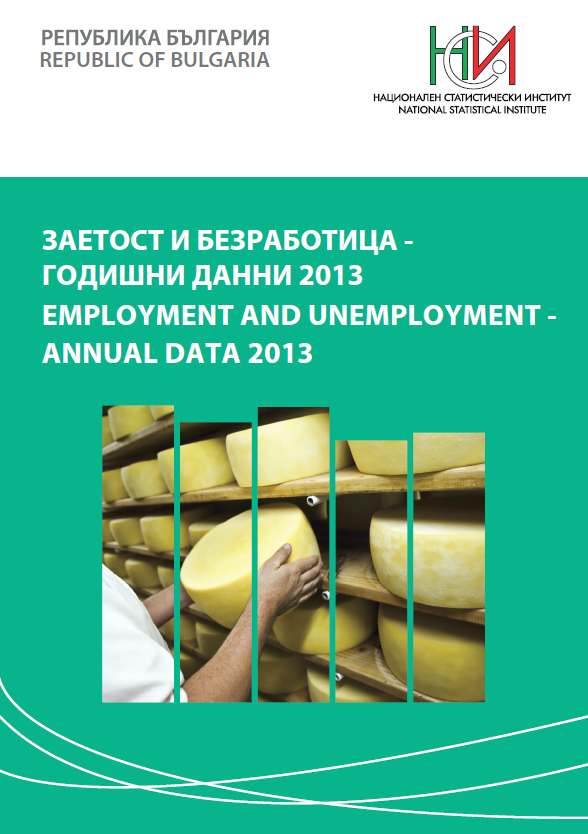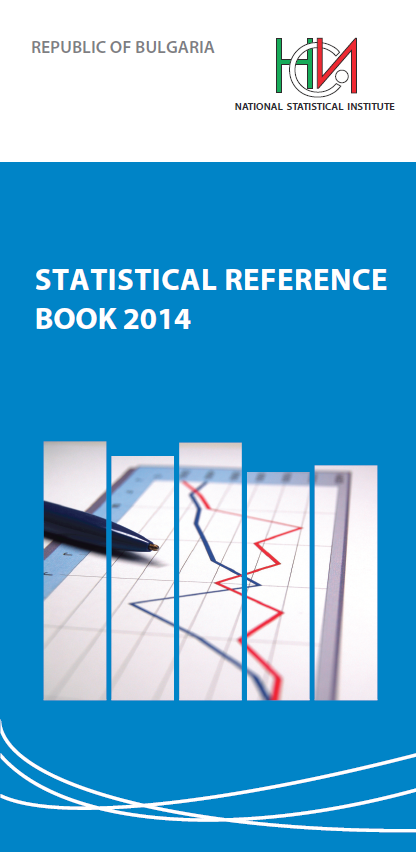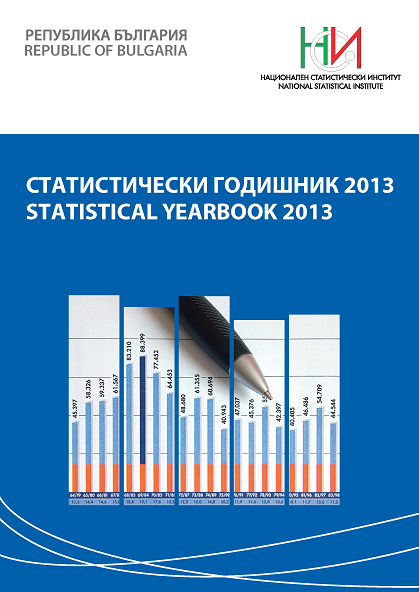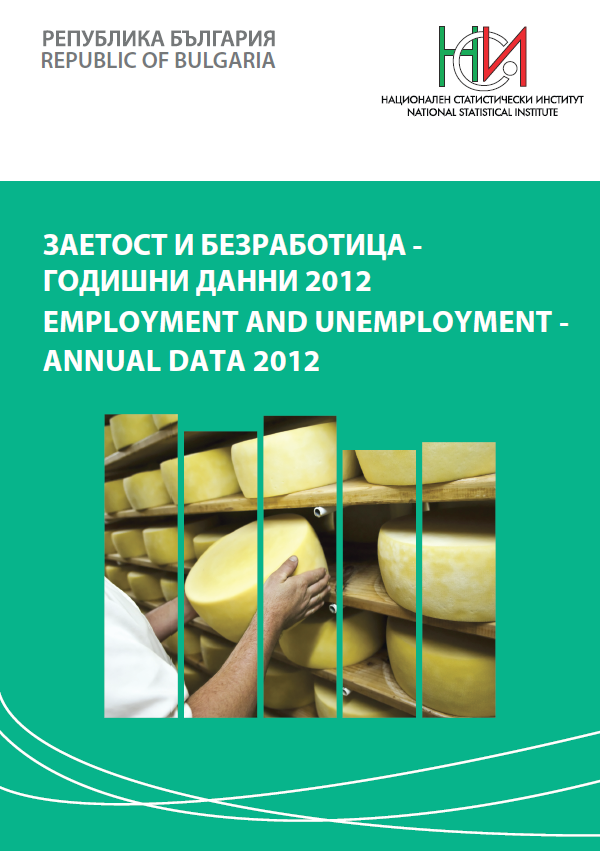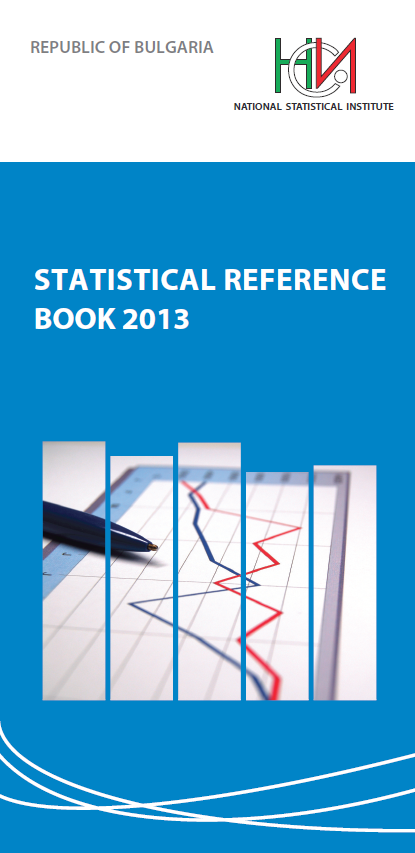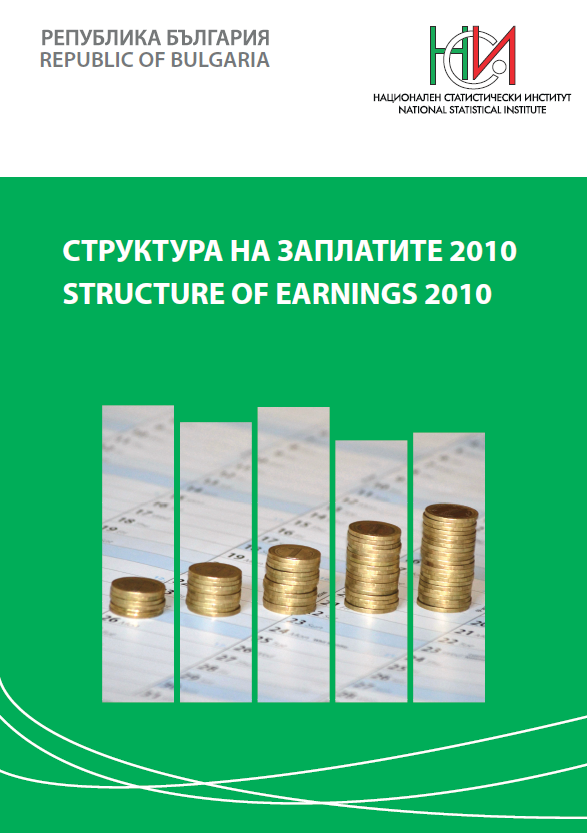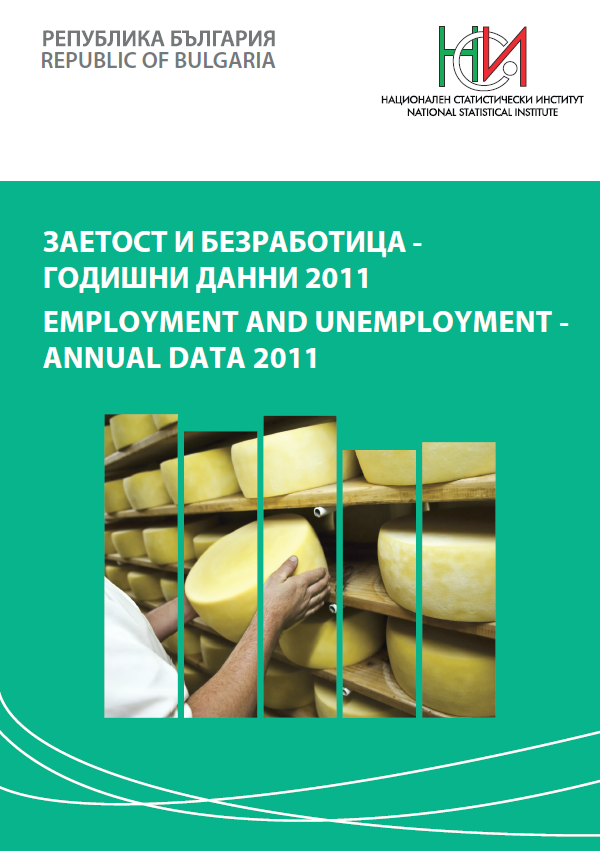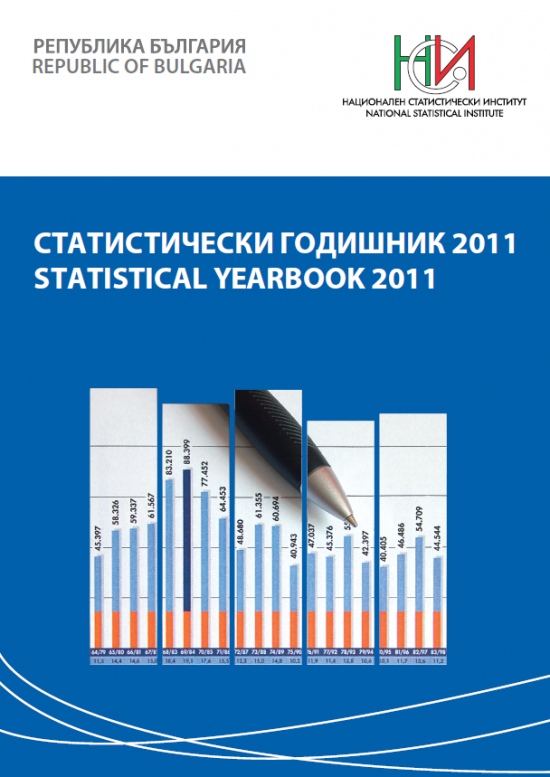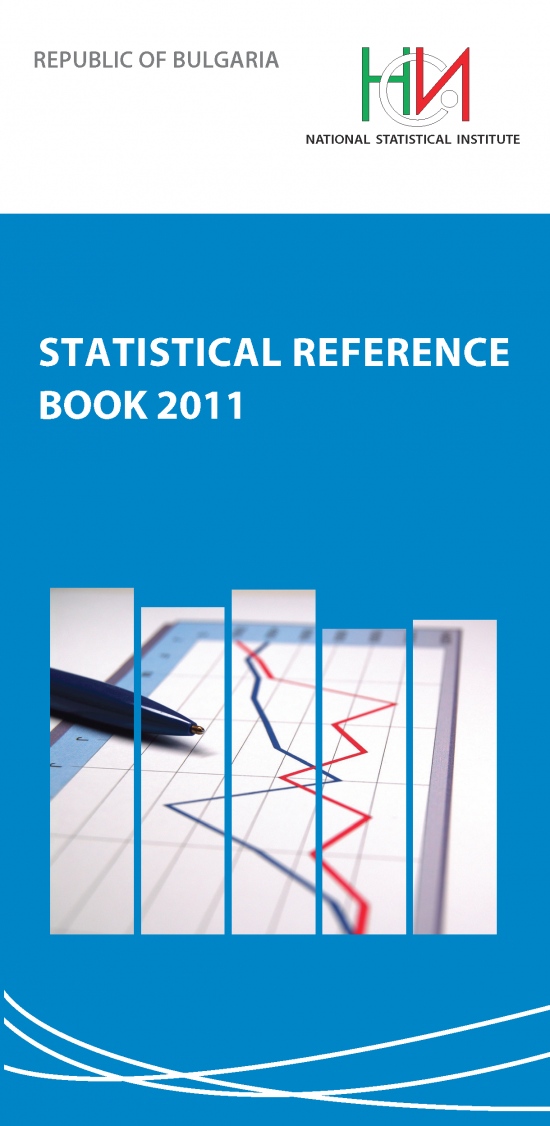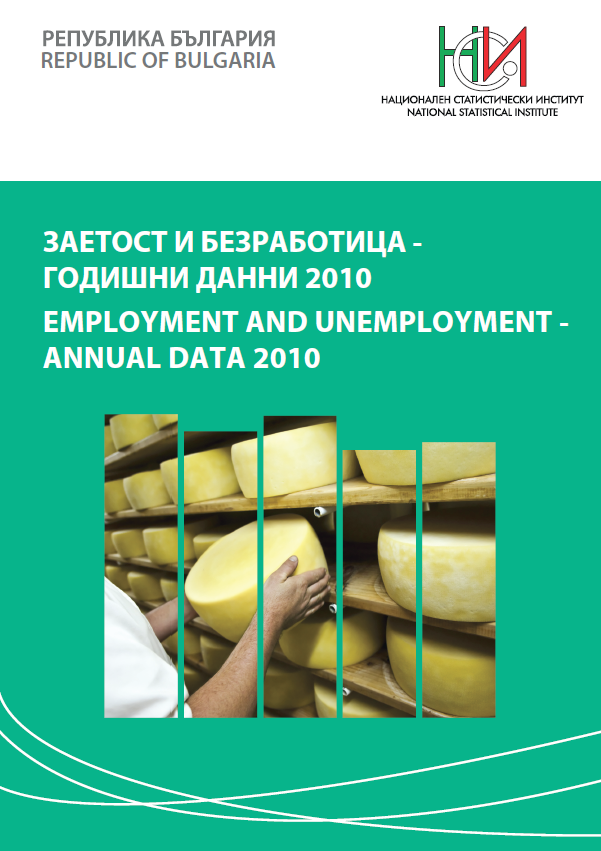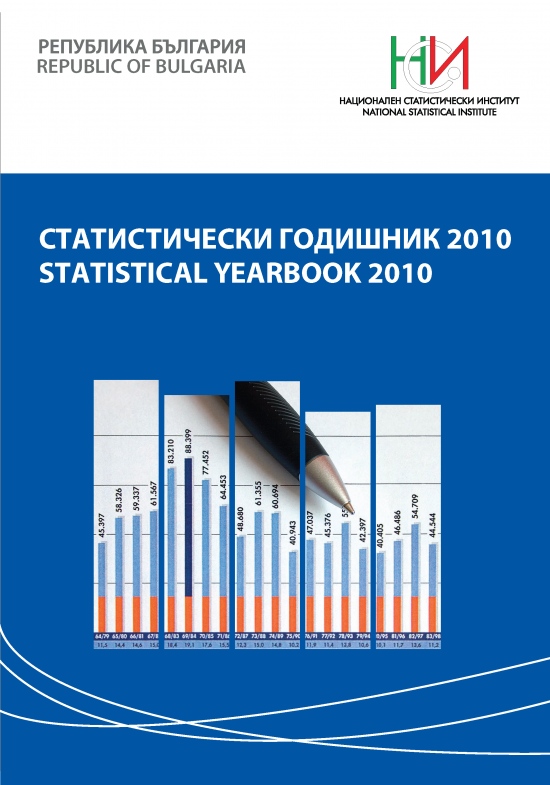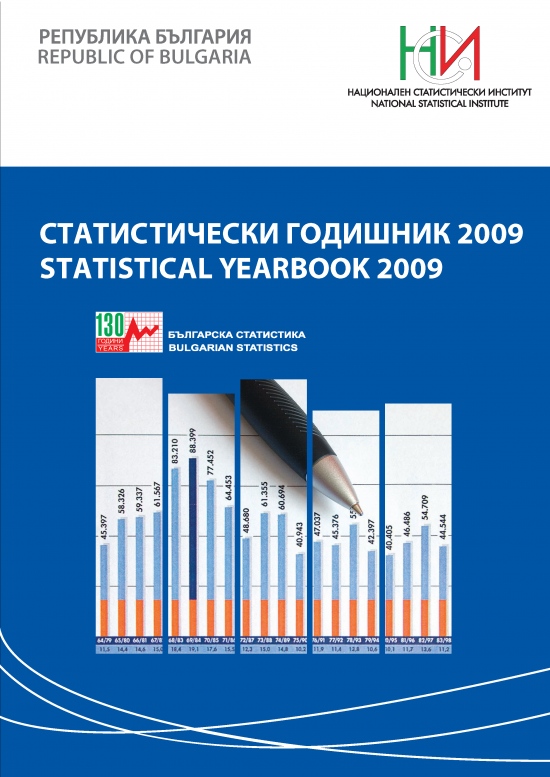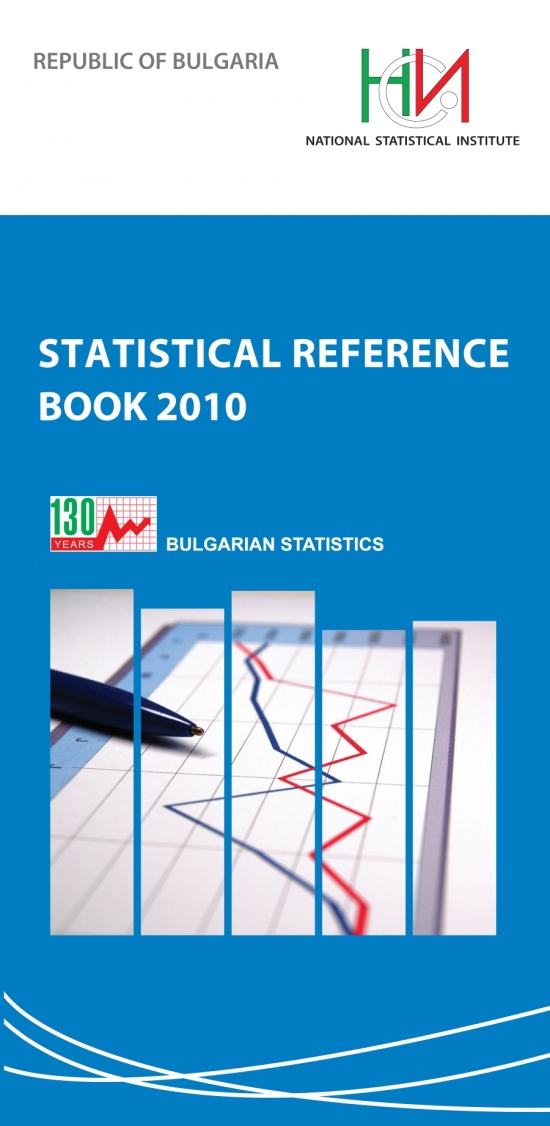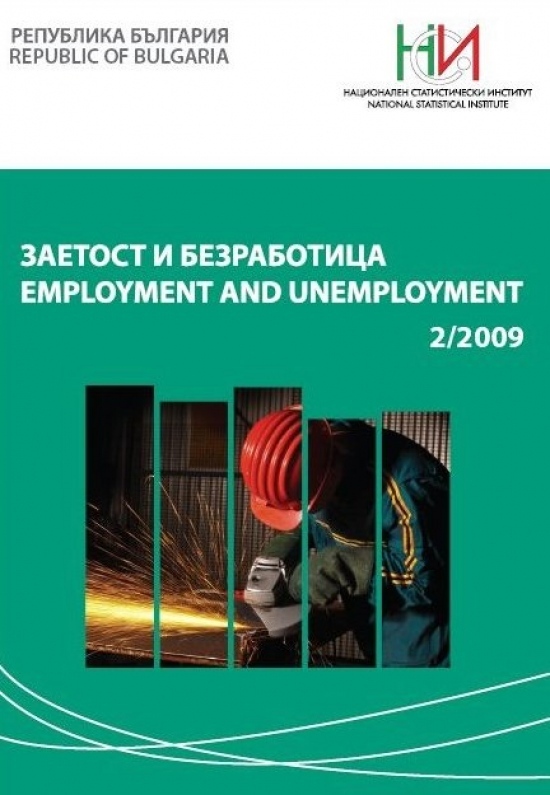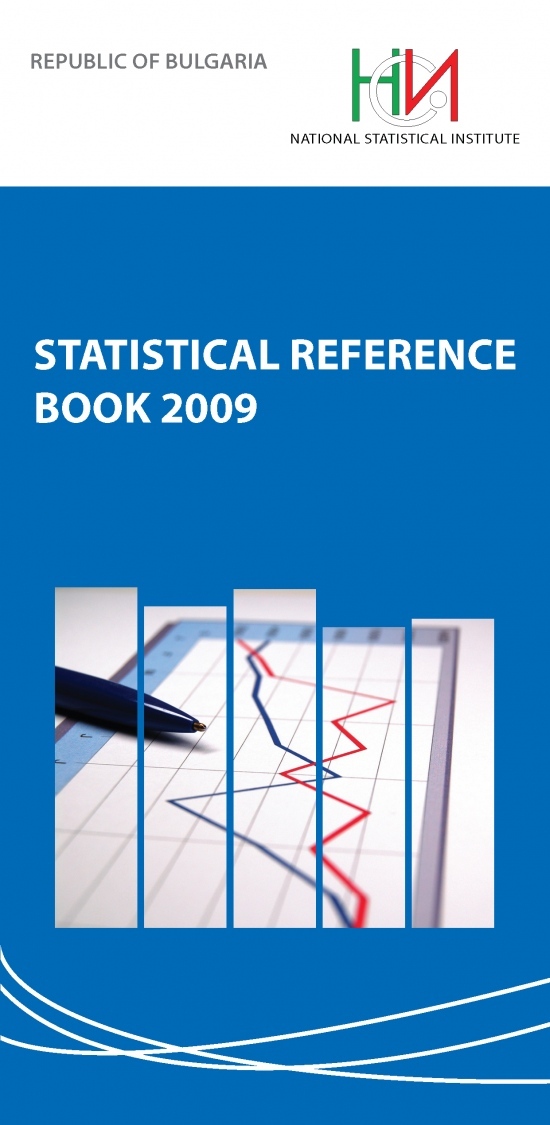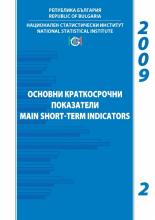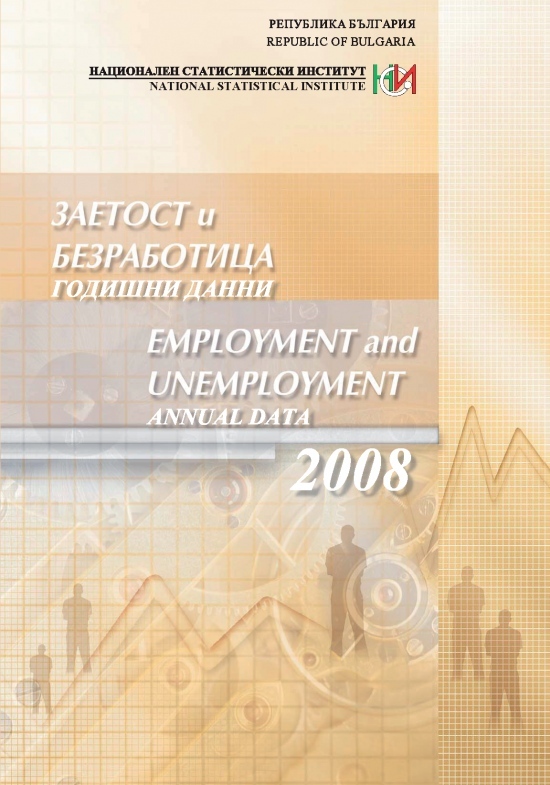Statistical regions; district
| Statistical regions | Months | |||||
|---|---|---|---|---|---|---|
| I | II | III | IV | V | VI | |
| Severozapaden | 1 879 | 1 861 | 1 947 | |||
| -Vidin | 1 631 | 1 628 | 1 686 | |||
| -Vratsa | 2 094 | 2 060 | 2 126 | |||
| -Lovech | 1 782 | 1 759 | 1 918 | |||
| -Montana | 1 728 | 1 710 | 1 839 | |||
| -Pleven | 1 924 | 1 914 | 1 963 | |||
| Severen tsentralen | 1 854 | 1 845 | 1 917 | |||
| -Veliko Tarnovo | 1 832 | 1 832 | 1 916 | |||
| -Gabrovo | 1 820 | 1 825 | 1 892 | |||
| -Razgrad | 1 859 | 1 868 | 1 906 | |||
| -Ruse | 1 952 | 1 923 | 2 001 | |||
| -Silistra | 1 669 | 1 635 | 1 715 | |||
| Severoiztochen | 2 073 | 2 051 | 2 125 | |||
| -Varna | 2 217 | 2 213 | 2 285 | |||
| -Dobrich | 1 788 | 1 767 | 1 811 | |||
| -Targovishte | 1 899 | 1 815 | 1 922 | |||
| -Shumen | 1 920 | 1 877 | 1 965 | |||
| Yugoiztochen | 1 920 | 1 917 | 1 971 | |||
| -Burgas | 1 941 | 1 912 | 1 956 | |||
| -Sliven | 1 741 | 1 728 | 1 798 | |||
| -Stara Zagora | 2 012 | 2 042 | 2 098 | |||
| -Yambol | 1 746 | 1 732 | 1 798 | |||
| Yugozapaden | 3 017 | 2 949 | 3 292 | |||
| -Blagoevgrad | 1 644 | 1 643 | 1 712 | |||
| -Kyustendil | 1 614 | 1 599 | 1 754 | |||
| -Pernik | 1 855 | 1 875 | 1 952 | |||
| -Sofia | 2 177 | 2 205 | 2 278 | |||
| -Sofia cap. | 3 309 | 3 221 | 3 628 | |||
| Yuzhen tsentralen | 1 917 | 1 879 | 1 955 | |||
| -Kardzhali | 1 773 | 1 751 | 1 823 | |||
| -Pazardzhik | 1 817 | 1 788 | 1 881 | |||
| -Plovdiv | 2 066 | 2 012 | 2 089 | |||
| -Smolyan | 1 618 | 1 621 | 1 730 | |||
| -Haskovo | 1 633 | 1 621 | 1 651 | |||
*Preliminary data |
||||||
| Statistical regions | Quarters 2025 | ||||
|---|---|---|---|---|---|
| І | ІІ | III | IV | IV incl.annual bonuses | |
| Severozapaden | 1 895 | ||||
| -Vidin | 1 648 | ||||
| -Vratsa | 2 093 | ||||
| -Lovech | 1 820 | ||||
| -Montana | 1 759 | ||||
| -Pleven | 1 934 | ||||
| Severen tsentralen | 1 872 | ||||
| -Veliko Tarnovo | 1 860 | ||||
| -Gabrovo | 1 845 | ||||
| -Razgrad | 1 878 | ||||
| -Ruse | 1 959 | ||||
| -Silistra | 1 673 | ||||
| Severoiztochen | 2 083 | ||||
| -Varna | 2 238 | ||||
| -Dobrich | 1 789 | ||||
| -Targovishte | 1 879 | ||||
| -Shumen | 1 921 | ||||
| Yugoiztochen | 1 936 | ||||
| -Burgas | 1 936 | ||||
| -Sliven | 1 756 | ||||
| -Stara Zagora | 2 051 | ||||
| -Yambol | 1 759 | ||||
| Yugozapaden | 3 086 | ||||
| -Blagoevgrad | 1 666 | ||||
| -Kyustendil | 1 656 | ||||
| -Pernik | 1 894 | ||||
| -Sofia | 2 220 | ||||
| -Sofia cap. | 3 386 | ||||
| Yuzhen tsentralen | 1 917 | ||||
| -Kardzhali | 1 782 | ||||
| -Pazardzhik | 1 829 | ||||
| -Plovdiv | 2 056 | ||||
| -Smolyan | 1 656 | ||||
| -Haskovo | 1 635 | ||||
*Preliminary data |
|||||
Euro-SDMX Metadata Structure (ESMS)
| Contact | ||||||||||||||||||||||||||||
|---|---|---|---|---|---|---|---|---|---|---|---|---|---|---|---|---|---|---|---|---|---|---|---|---|---|---|---|---|
| Contact organisation | National Statistical Institute | |||||||||||||||||||||||||||
| Contact organisation unit | Statistics on Labour costs, Research and Development, Innovation and Information Society Department
| |||||||||||||||||||||||||||
| Contact name | Todor Davidkov | |||||||||||||||||||||||||||
| Contact person function | Head of department | |||||||||||||||||||||||||||
| Contact mail address | 2, P. Volov Str.; 1038 Sofia, Bulgaria | |||||||||||||||||||||||||||
| Contact email address | ||||||||||||||||||||||||||||
| Contact phone number | +359 2 9857 568 | |||||||||||||||||||||||||||
| Contact fax number | ||||||||||||||||||||||||||||
| Metadata update | ||||||||||||||||||||||||||||
| Metadata last certified | 31 January 2025 | |||||||||||||||||||||||||||
| Metadata last posted | 31 January 2025 | |||||||||||||||||||||||||||
| Metadata last update | 31 January 2025 | |||||||||||||||||||||||||||
| Statistical presentation | ||||||||||||||||||||||||||||
| Data description | The data are collected from enterprises and organizations that perform economic activity in Republic of Bulgaria. Sources of information are: pay-roll sheets, presence and absence sheets, labour or non-labour contracts, management contracts, letters of appointment or discharge, applications for paid or unpaid leaves etc. | |||||||||||||||||||||||||||
| Classification system | · National Classification of Economic Activities (NCEA-2003, for international use NACE.BG 2003); · Classification of Economic Activities (CEA-2008, for international use NACE.BG 2008); · Unified Classification of Administrative-Territorial and Territorial Units (UCATTU); · Classification of territorial units for statistical purposes in Bulgaria (NUTS); · National Classification of occupations and duties (comparable with ISCO08). | |||||||||||||||||||||||||||
| Sector coverage | Covered are enterprises from all economic activities irrespective of their type of ownership and source of financing, which have at least one employee working under labour contract. | |||||||||||||||||||||||||||
| Statistical concepts and definitions | Employees are all persons who have a labour contract (fixed or permanent; full-time or part-time) with their employer by virtue of the Labour Code or the Civil Servants Act and who receive remuneration in cash or in kind for certain quality and quantity of work done. The average monthly number of employees is the arithmetic mean value of the daily number of employees (sum of the daily number of employees divided by the number of days for the reference month). Part-time employees are converted into full-time equivalents. Gross wages and salaries are the remunerations paid regularly to the employees by the employers before the deduction of any tax and social security contributions payable by the employees and withheld by the employers. Gross wages and salaries comprise of: basic wages and salaries for time worked or work done; payments for statutory, contractual or voluntary leave; payments for overtime, shift work, extreme working conditions, length of service; monthly, quarterly and annual bonuses. The average monthly wages and salaries are calculated through dividing the total amount of wages and salaries costs accrued during the reference month by the average monthly number of employees under labour contract excluding those on maternity leave. Occupied post - an occupied post is a post within the organization to which an employee has been assigned under labour contract. The number of occupied posts is corresponding to the number of employees at the last day of the reference quarter without those absent from work for a period longer than 3 months (maternity leave, sick leave, unpaid leave). Job vacancy - a job vacancy is defined as a newly created, unoccupied or about to become vacant post: 1) which the employer intends to fill either immediately or in the near future (3-months) and 2) for which the employer is taking active steps to find suitable candidate from outside the enterprise and is prepare to take more steps. Under the term "active steps" are included the following activities: announcing the post in Employment Agency, media (TV, newspapers, internet), direct contact with possible candidates and announcing a vacant post open to competition. The job vacancy rate measures the proportion of number of job vacancies and the total sum of number of occupied posts and number of vacancies. Labour Cost Index (LCI) is defined as Laspeyres index of labour costs per hour worked with base year 2020=100. It is calculated broken-down by economic activity at NACE.BG 2008 section level. | |||||||||||||||||||||||||||
| Statistical unit | The observation units are enterprises' companies, ministries, departments, political, religious, public and other organizations, that perform economical activities in Republic of Bulgaria and have at least one employee working under labour contract during the reference period. | |||||||||||||||||||||||||||
| Statistical population | Number of employees, job vacancies and wages and salaries data correspond to the enterprises with one and more employees from all economic activities. Labour cost index refer to the enterprises with one and more employees from economic activities from B to S (incl. O) from NACE.BG 2008. | |||||||||||||||||||||||||||
| Reference area | The whole country is covered. | |||||||||||||||||||||||||||
| Time coverage | 2000 - 2024 | |||||||||||||||||||||||||||
| Base period | · Not applicable - number of employees, wages and salaries, occupied posts, job vacancies and job vacancy rate; · Labour Cost Index - base year 2020. | |||||||||||||||||||||||||||
| Unit of measure | ||||||||||||||||||||||||||||
· Employees - number at the end of the month; · Average wages and salaries - BGN; · Occupied posts and job vacancies - number at the end of the month; · Job vacancy rate - percent; · Labour cost index - percent. | ||||||||||||||||||||||||||||
| Reference period | ||||||||||||||||||||||||||||
The survey is conducted quarterly with figures for each month of the quarter. | ||||||||||||||||||||||||||||
| Institutional mandate | ||||||||||||||||||||||||||||
| Legal acts and other agreements | · Law on Statistics; · National Statistical Programme. · Regulation (EC) No 450/2003 of the European Parliament and of the Council of 27 February 2003 concerning the labour cost index: · Commission Regulation (EC) No 1216/2003 of 7 July 2003 implementing Regulation (EC) No 450/2003 of the European Parliament and of the Council concerning the labour cost index; · Regulation (EC) No 453/2008 of the European Parliament and of the Council of 23 April 2008 on quarterly statistics on Community job vacancies; · Commission Regulation (EC) No 1062/2008 of 28 October 2008 implementing Regulation (EC) No 453/2008 of the European Parliament and of the Council on quarterly statistics on Community job vacancies, as regards seasonal adjustment procedures and quality reports: · Commission Regulation (EC) No 19/2009 of 13 January 2009 implementing Regulation (EC) No 453/2008 of the European Parliament and of the Council on quarterly statistics on Community job vacancies, as regards the definition of a job vacancy, the reference dates for data collection, data transmission specifications and feasibility studies. | |||||||||||||||||||||||||||
| Data sharing | Not applicable. | |||||||||||||||||||||||||||
| Confidentiality | ||||||||||||||||||||||||||||
| Confidentiality - policy | · Law on Statistics; · Regulation (EC) N0 223/2009 of the European Parliament and of the Council of 11 March 2009 on European statistics (provision 24 and Article 20 (4)) (OJ L 87, p. 164), stipulates the necessity to establish common principles and guidelines ensuring the confidentiality of data used for the production of European statistics and the access to those confidential data with due account for technical developments and the requirements of users in a democratic society. | |||||||||||||||||||||||||||
| Confidentiality - data treatment | Individual data are not disseminated following the rules set in Article 25 from the Law on Statistics. The dissemination of individual data is done only under Article 26 from the same law. | |||||||||||||||||||||||||||
| Release policy | ||||||||||||||||||||||||||||
| Release calendar | The actual date of data publication is set in the National Statistical Institute Release Calendar. Statistics on number of employees, wages and salaries, occupied posts, job vacancies and labour cost index is published four times a year. | |||||||||||||||||||||||||||
| Release calendar access | The calendar is available on the NSI website: https://www.nsi.bg/en/node/480 | |||||||||||||||||||||||||||
| User access | The data are published on the NSI website, section Labour Market in accordance with the Law on Statistics and the European Statistics Code of Practice respecting the professional independence and aimed at objectivity, transparency and equal treatment of all consumers. | |||||||||||||||||||||||||||
| Frequency of dissemination | ||||||||||||||||||||||||||||
Quarterly | ||||||||||||||||||||||||||||
| Accessibility and clarity | ||||||||||||||||||||||||||||
| News release | Press release with main results from the quarterly survey on Number of Employees, time worked, wages and salaries and other labour costs is prepared and published on the NSI official website. The results are published in compliance with the NSI Release Calendar. | |||||||||||||||||||||||||||
| Publications | Statistical Reference Book | |||||||||||||||||||||||||||
| On-line database | Detailed results are available to all users of the NSI website under the heading Labour Market -Short-term statistics: https://www.nsi.bg/en/node/6398 Information System INFOSTAT: https://infostat.nsi.bg/infostat/pages/module.jsf?x_2=93 | |||||||||||||||||||||||||||
| Micro-data access | Access to anonymised micro-data can be granted for research and scientific purposes upon request and following the Rules for granting access to anonymised micro-data for scientific and research purposes set by NSI. | |||||||||||||||||||||||||||
| Other | More detailed data, not published on the NSI web page can be prepared upon users' request according to the NSI Regulation for dissemination of statistical products and services. | |||||||||||||||||||||||||||
| Documentation on methodology | Methodological paper for the calculation of the average number of employees in full-time equivalents. | |||||||||||||||||||||||||||
| Quality documentation | · Labour Cost Index quality report; · Job vacancies statistics quality report. | |||||||||||||||||||||||||||
| Quality management | ||||||||||||||||||||||||||||
| Quality assurance | According to Article 2, point 3 from the Law on Statistics the statistical information shall be produced in compliance with the following criteria for quality: adequacy, accuracy, timeliness, punctuality, accessibility and clarity, comparability and logical consistency. | |||||||||||||||||||||||||||
| Quality assessment | Quality reports for the Labour Cost Index and Job vacancies are prepared every year by the end of August. | |||||||||||||||||||||||||||
| Relevance | ||||||||||||||||||||||||||||
| User needs | The users groups are defined on the basis of the received data requests. They can be classified in the following main groups:
Internal users: Labour Force Survey, National Accounts. | |||||||||||||||||||||||||||
| User satisfaction | No information available. | |||||||||||||||||||||||||||
| Completeness | Regarding the job vacancies and labour cost index the data are available in all requested breakdowns. For the number of employees and wages and salaries the data refer to the whole country and all economic activities. | |||||||||||||||||||||||||||
| Accuracy and reliability | ||||||||||||||||||||||||||||
| Overall accuracy | The overall accuracy of the survey results depends of: · Sample size. Each quarter at about 18 thousands enterprises are surveyed. Up to 2007 the survey is carried out exhaustively for the public sector units and by a sample for the private sector units. Since first quarter of 2008 a sample from the public owned schools and kindergartens is drawn and they are no longer exhaustively covered in the survey. The private sector sample is a stratified random sample without replacement. The stratification criteria used are: size of the enterprise in terms of employees, economic activity and NUTS 3 level. The sampling rates for the enterprises according to the number of employees are as follows: up to 49 employees - 5%, from 50 to 99 employees - 40% and 100 and more employees - 100% (census); · Sampling frame. The sampling frame from which the survey sample is drown is taken from the annual exhaustive survey on Number of employees, wages and salaries and other labour costs for the year t-2 (the last available at the moment of sampling). The sampling frame is updated with information from administrative sources; · Survey tools. The statistical form for the survey is available in electronic and paper format. In 2012 the survey become part from Information system Short-term Business Statistics, which is on-line based allowing 24 hours data collection and incorporates logical and arithmetic controls visible immediately during the data entry; · Methods for errors identification and correction. The data processing goes through three main stages of validation: 1) data entry - 85 checks are included in the electronic form which control the plausibility of the inserted values and item non-response; 2) at regional level, the Regional Statistical Offices of NSI perform post-validation via 25 additional control incl. checks for coverage, extreme and missing values; 3) at national level, the Head Office of NSI performs additional validation as well for coverage and completeness. Comparability is made with administrative and other sources. | |||||||||||||||||||||||||||
| Sampling error | Coefficients of variation and confidence intervals are calculated for assessment of stochastic reliability of the estimation for main indicators. For the third quarter of 2023 for the private sector they are:
| |||||||||||||||||||||||||||
| Non-sampling error | The non-response rate for the third quarter of 2023 is 4.1%. The reasons for non-response are rather due to the use of old sampling frame i.e. inclusion in the sample of dead enterprises, enterprises with frozen activity, without employees, out of date contact information etc. rather than explicit refusals. Unit non-response adjustment is done by re-weighting - sample size is replaced with the number of the responded units in the calculation of weights. Information from administrative Register of Insured Persons is used as well. | |||||||||||||||||||||||||||
| Timeliness and punctuality | ||||||||||||||||||||||||||||
| Timeliness | Monthly data on the number of employees and their average monthly and quarterly wages and salaries, job vacancies and the job vacancy rate are published 40 days after the end of I-st, II-nd and III-rd quarter. The IV-th quarter data are announced 45 days after the end of the reference period. The Labour cost index is published 80 days after the reference quarter. | |||||||||||||||||||||||||||
| Punctuality | The survey results are presented at the actual date set in the National Statistical Institute Release Calendar. | |||||||||||||||||||||||||||
| Coherence and comparability | ||||||||||||||||||||||||||||
| Comparability - geographical | The national and regional statistical data on employees and wages and salaries are in compliance with the acting Classification of territorial units for statistical purposes in Bulgaria (NUTS). Labour Cost Index and job vacancies statistics are produced in compliance with the EU legislation therefore comparable at EU level as well. | |||||||||||||||||||||||||||
| Comparability - over time | The comparability over time is disturbed by the changes of the Classification of Economic Activities. Up to 2007 NACE.BG 2003 was in force, since 2008 NACE.BG 2008 was implemented, which resulted in break of the time series for number of employees and wages and salaries. The Labour Cost Index series were back casted according to the NACE.BG 2008 as the time series begin from first quarter of 2000. | |||||||||||||||||||||||||||
| Coherence - cross domain | Coherence between the Labour Force Survey (LFS) and the survey on Number of employees, wages and salaries and other labour costs The main difference between the both sources is due to the fact that the survey on Number of employees, wages and salaries and other labour costs collects information on the persons which have an employment contract according to the Labour Code or Civil Servants Act, while Labour Force Survey covers employees working by other type of contract or without any contract, as well the self-employed (working proprietors, own account works and unpaid family workers). LFS includes armed forces, but excludes persons on leave for raising a child up to two years of age. Methodological differences such as: sampling unit, reference period, methods of data classification by economic activity, regional distribution (working place/ residence) etc. are potential reason for data discrepancies as well. Coherence between the survey on Number of employees, wages and salaries and other labour costs and National Accounts National Accounts as a system responsible for producing statistics with full coverage of the national economy and assuring comparability with the other main macroeconomic indicators is combining different sources in its estimates therefore the figures for employment, compensation of employees are different from the ones produced from the survey on employees, wages and salaries and other labour costs. There are differences in the definitions as well. The compensation of employees calculated by National Accounts includes payments which are not included in total labour costs such as: part of daily allowances for business travelling; provision of recreation or holiday facilities for employees and their families; costs related to employees working under non-labour contract and their earnings in the form of fees and commissions. National Accounts make additional adjustments for exhaustiveness on the following components: tips are estimated for activities like restaurants, bars, transport and other service activities (hairdressing and other beauty treatment); non-reported wages for employees working without any contract (informal employment). | |||||||||||||||||||||||||||
| Coherence - internal | All indicators are internal coherent. | |||||||||||||||||||||||||||
| Cost and burden | ||||||||||||||||||||||||||||
No information is available for the respondents’ burden. | ||||||||||||||||||||||||||||
| Data revision | ||||||||||||||||||||||||||||
| Data revision - policy | The data revision means that different estimations for one and the same indicator are presented in different point of time. The main purpose of the revisions is to publish the best available estimates at the moment taking into account more exhaustive and with the better quality information available. | |||||||||||||||||||||||||||
| Data revision - practice | The population from which the survey sample for year t is drown contains all private sector enterprises that submitted annual balance sheets (incl. labour form) for year t-2 (the most recent available at the time of sampling) and the privatized enterprises during year (t-1). Due to the long period of time between the population from which the sample is made and the reference year two revisions of quarterly data are need to be done. The first revision is done when annual final data for year (t-1) are announced. Its aim is to update the population. The second one is imposed due to the impossibility to cover the newly established firms in time and it is done when annual final data for year (t) become available. | |||||||||||||||||||||||||||
| Statistical processing | ||||||||||||||||||||||||||||
| Source data | The data source is the quarterly sample survey on the Number of employees, time worked, wages and salaries and other labour costs. | |||||||||||||||||||||||||||
| Frequency of data collection | Quarterly | |||||||||||||||||||||||||||
| Data collection | Up to 2007 the survey is carried out exhaustively for the public sector units and by a sample for the private sector units. Since first quarter of 2008 a sample from the public owned schools and kindergartens is drawn and they are no longer exhaustively covered in the survey. | |||||||||||||||||||||||||||
| Data validation | The data validation goes through three stages:
| |||||||||||||||||||||||||||
| Data compilation | The data processing goes through the following stages:
| |||||||||||||||||||||||||||
| Adjustment | Labour Cost Index series are published in the following three forms:
| |||||||||||||||||||||||||||
| Comment | ||||||||||||||||||||||||||||
ESS Standard for Quality Reports Structure (ESQRS)
| Contact | ||||||||||||||||||||||||||||
|---|---|---|---|---|---|---|---|---|---|---|---|---|---|---|---|---|---|---|---|---|---|---|---|---|---|---|---|---|
| Contact organisation | National Statistical Institute | |||||||||||||||||||||||||||
| Contact organisation unit | Statistics on Labour costs, Research and Development, Innovation and Information Society Department
| |||||||||||||||||||||||||||
| Contact name | Todor Davidkov | |||||||||||||||||||||||||||
| Contact person function | Head of department | |||||||||||||||||||||||||||
| Contact mail address | 2, P. Volov Str.; 1038 Sofia, Bulgaria | |||||||||||||||||||||||||||
| Contact email address | ||||||||||||||||||||||||||||
| Contact phone number | +359 2 9857 568 | |||||||||||||||||||||||||||
| Contact fax number | ||||||||||||||||||||||||||||
| Statistical presentation | ||||||||||||||||||||||||||||
| Data description | The data are collected from enterprises and organizations that perform economic activity in Republic of Bulgaria. Sources of information are: pay-roll sheets, presence and absence sheets, labour or non-labour contracts, management contracts, letters of appointment or discharge, applications for paid or unpaid leaves etc. | |||||||||||||||||||||||||||
| Classification system | · National Classification of Economic Activities (NCEA-2003, for international use NACE.BG 2003); · Classification of Economic Activities (CEA-2008, for international use NACE.BG 2008); · Unified Classification of Administrative-Territorial and Territorial Units (UCATTU); · Classification of territorial units for statistical purposes in Bulgaria (NUTS); · National Classification of occupations and duties (comparable with ISCO08). | |||||||||||||||||||||||||||
| Sector coverage | Covered are enterprises from all economic activities irrespective of their type of ownership and source of financing, which have at least one employee working under labour contract. | |||||||||||||||||||||||||||
| Statistical concepts and definitions | Employees are all persons who have a labour contract (fixed or permanent; full-time or part-time) with their employer by virtue of the Labour Code or the Civil Servants Act and who receive remuneration in cash or in kind for certain quality and quantity of work done. The average monthly number of employees is the arithmetic mean value of the daily number of employees (sum of the daily number of employees divided by the number of days for the reference month). Part-time employees are converted into full-time equivalents. Gross wages and salaries are the remunerations paid regularly to the employees by the employers before the deduction of any tax and social security contributions payable by the employees and withheld by the employers. Gross wages and salaries comprise of: basic wages and salaries for time worked or work done; payments for statutory, contractual or voluntary leave; payments for overtime, shift work, extreme working conditions, length of service; monthly, quarterly and annual bonuses. The average monthly wages and salaries are calculated through dividing the total amount of wages and salaries costs accrued during the reference month by the average monthly number of employees under labour contract excluding those on maternity leave. Occupied post - an occupied post is a post within the organization to which an employee has been assigned under labour contract. The number of occupied posts is corresponding to the number of employees at the last day of the reference quarter without those absent from work for a period longer than 3 months (maternity leave, sick leave, unpaid leave). Job vacancy - a job vacancy is defined as a newly created, unoccupied or about to become vacant post: 1) which the employer intends to fill either immediately or in the near future (3-months) and 2) for which the employer is taking active steps to find suitable candidate from outside the enterprise and is prepare to take more steps. Under the term "active steps" are included the following activities: announcing the post in Employment Agency, media (TV, newspapers, internet), direct contact with possible candidates and announcing a vacant post open to competition. The job vacancy rate measures the proportion of number of job vacancies and the total sum of number of occupied posts and number of vacancies. Labour Cost Index (LCI) is defined as Laspeyres index of labour costs per hour worked with base year 2020=100. It is calculated broken-down by economic activity at NACE.BG 2008 section level. | |||||||||||||||||||||||||||
| Statistical unit | The observation units are enterprises' companies, ministries, departments, political, religious, public and other organizations, that perform economical activities in Republic of Bulgaria and have at least one employee working under labour contract during the reference period. | |||||||||||||||||||||||||||
| Statistical population | Number of employees, job vacancies and wages and salaries data correspond to the enterprises with one and more employees from all economic activities. Labour cost index refer to the enterprises with one and more employees from economic activities from B to S (incl. O) from NACE.BG 2008. | |||||||||||||||||||||||||||
| Reference area | The whole country is covered. | |||||||||||||||||||||||||||
| Time coverage | 2000 - 2024 | |||||||||||||||||||||||||||
| Base period | · Not applicable - number of employees, wages and salaries, occupied posts, job vacancies and job vacancy rate; · Labour Cost Index - base year 2020. | |||||||||||||||||||||||||||
| Statistical processing | ||||||||||||||||||||||||||||
| Source data | The data source is the quarterly sample survey on the Number of employees, time worked, wages and salaries and other labour costs. | |||||||||||||||||||||||||||
| Frequency of data collection | Quarterly | |||||||||||||||||||||||||||
| Data collection | Up to 2007 the survey is carried out exhaustively for the public sector units and by a sample for the private sector units. Since first quarter of 2008 a sample from the public owned schools and kindergartens is drawn and they are no longer exhaustively covered in the survey. | |||||||||||||||||||||||||||
| Data validation | The data validation goes through three stages:
| |||||||||||||||||||||||||||
| Data compilation | The data processing goes through the following stages:
| |||||||||||||||||||||||||||
| Adjustment | Labour Cost Index series are published in the following three forms:
| |||||||||||||||||||||||||||
| Quality management | ||||||||||||||||||||||||||||
| Quality assurance | According to Article 2, point 3 from the Law on Statistics the statistical information shall be produced in compliance with the following criteria for quality: adequacy, accuracy, timeliness, punctuality, accessibility and clarity, comparability and logical consistency. | |||||||||||||||||||||||||||
| Quality assessment | Quality reports for the Labour Cost Index and Job vacancies are prepared every year by the end of August. | |||||||||||||||||||||||||||
| Relevance | ||||||||||||||||||||||||||||
| User needs | The users groups are defined on the basis of the received data requests. They can be classified in the following main groups:
Internal users: Labour Force Survey, National Accounts. | |||||||||||||||||||||||||||
| User satisfaction | No information available. | |||||||||||||||||||||||||||
| Completeness | Regarding the job vacancies and labour cost index the data are available in all requested breakdowns. For the number of employees and wages and salaries the data refer to the whole country and all economic activities. | |||||||||||||||||||||||||||
| Data completeness - rate | 100% for the information on number of employees, wages and salaries and job vacancies 75% for the labour cost index | |||||||||||||||||||||||||||
| Accuracy and reliability | ||||||||||||||||||||||||||||
| Overall accuracy | The overall accuracy of the survey results depends of: · Sample size. Each quarter at about 18 thousands enterprises are surveyed. Up to 2007 the survey is carried out exhaustively for the public sector units and by a sample for the private sector units. Since first quarter of 2008 a sample from the public owned schools and kindergartens is drawn and they are no longer exhaustively covered in the survey. The private sector sample is a stratified random sample without replacement. The stratification criteria used are: size of the enterprise in terms of employees, economic activity and NUTS 3 level. The sampling rates for the enterprises according to the number of employees are as follows: up to 49 employees - 5%, from 50 to 99 employees - 40% and 100 and more employees - 100% (census); · Sampling frame. The sampling frame from which the survey sample is drown is taken from the annual exhaustive survey on Number of employees, wages and salaries and other labour costs for the year t-2 (the last available at the moment of sampling). The sampling frame is updated with information from administrative sources; · Survey tools. The statistical form for the survey is available in electronic and paper format. In 2012 the survey become part from Information system Short-term Business Statistics, which is on-line based allowing 24 hours data collection and incorporates logical and arithmetic controls visible immediately during the data entry; · Methods for errors identification and correction. The data processing goes through three main stages of validation: 1) data entry - 85 checks are included in the electronic form which control the plausibility of the inserted values and item non-response; 2) at regional level, the Regional Statistical Offices of NSI perform post-validation via 25 additional control incl. checks for coverage, extreme and missing values; 3) at national level, the Head Office of NSI performs additional validation as well for coverage and completeness. Comparability is made with administrative and other sources. | |||||||||||||||||||||||||||
| Sampling error | Coefficients of variation and confidence intervals are calculated for assessment of stochastic reliability of the estimation for main indicators. For the third quarter of 2023 for the private sector they are:
| |||||||||||||||||||||||||||
| Sampling errors - indicators |
| |||||||||||||||||||||||||||
| Non-sampling error | The non-response rate for the third quarter of 2023 is 4.1%. The reasons for non-response are rather due to the use of old sampling frame i.e. inclusion in the sample of dead enterprises, enterprises with frozen activity, without employees, out of date contact information etc. rather than explicit refusals. Unit non-response adjustment is done by re-weighting - sample size is replaced with the number of the responded units in the calculation of weights. Information from administrative Register of Insured Persons is used as well. | |||||||||||||||||||||||||||
| Coverage error | The target population for the survey is all enterprises with one or more employees under labour contract. In the survey sample 300 enterprises (1.5% from enterprises in the sample) were inactive or without employees. | |||||||||||||||||||||||||||
| Over-coverage - rate | 1.5% | |||||||||||||||||||||||||||
| Common units - proportion | The administrative Register of Insured Persons from the National Social Security Institute is used mainly for reducing unit non-response. The data for around 405 refusing enterprises, 2.0% from the total number of surveyed enterprises, is imputed from the administrative register each quarter. | |||||||||||||||||||||||||||
| Measurement error | The average annual number of employees under labour contract is collected in rounded whole numbers. | |||||||||||||||||||||||||||
| Non response error | The main reasons for non-response are rather due to the use of old sampling frame i.e. inclusion in the sample of dead enterprises, enterprises with frozen activity, without employees, out of date contact information etc. rather than explicit refusals. | |||||||||||||||||||||||||||
| Unit non-response - rate | 4.1% | |||||||||||||||||||||||||||
| Item non-response - rate | Not calculated. The logical and arithmetic controls do not allow missing information for the main variables in the survey. | |||||||||||||||||||||||||||
| Processing error | After consolidation of the regional data into national database checks are done for duplicated records. | |||||||||||||||||||||||||||
| Imputation - rate | The data for around 405 refusing enterprises, 2.0% from the total number of surveyed enterprises, is imputed from the administrative register each quarter. | |||||||||||||||||||||||||||
| Model assumption error | Not applicable | |||||||||||||||||||||||||||
| Seasonal adjustment | Labour Cost Index series are published in the following three forms:
| |||||||||||||||||||||||||||
| Data revision - policy | The data revision means that different estimations for one and the same indicator are presented in different point of time. The main purpose of the revisions is to publish the best available estimates at the moment taking into account more exhaustive and with the better quality information available. | |||||||||||||||||||||||||||
| Data revision - practice | The population from which the survey sample for year t is drown contains all private sector enterprises that submitted annual balance sheets (incl. labour form) for year t-2 (the most recent available at the time of sampling) and the privatized enterprises during year (t-1). Due to the long period of time between the population from which the sample is made and the reference year two revisions of quarterly data are need to be done. The first revision is done when annual final data for year (t-1) are announced. Its aim is to update the population. The second one is imposed due to the impossibility to cover the newly established firms in time and it is done when annual final data for year (t) become available. | |||||||||||||||||||||||||||
| Data revision - average size | Number of employees - 3.2% Average monthly wages and salaries - 0.2% | |||||||||||||||||||||||||||
| Timeliness and punctuality | ||||||||||||||||||||||||||||
| Timeliness | Monthly data on the number of employees and their average monthly and quarterly wages and salaries, job vacancies and the job vacancy rate are published 40 days after the end of I-st, II-nd and III-rd quarter. The IV-th quarter data are announced 45 days after the end of the reference period. The Labour cost index is published 80 days after the reference quarter. | |||||||||||||||||||||||||||
| Time lag - first results | 40 days | |||||||||||||||||||||||||||
| Time lag - final results | 24 months | |||||||||||||||||||||||||||
| Punctuality | The survey results are presented at the actual date set in the National Statistical Institute Release Calendar. | |||||||||||||||||||||||||||
| Punctuality - delivery and publication | Normally there is no delay between the planned and the actual date of publication. | |||||||||||||||||||||||||||
| Coherence and comparability | ||||||||||||||||||||||||||||
| Comparability - geographical | The national and regional statistical data on employees and wages and salaries are in compliance with the acting Classification of territorial units for statistical purposes in Bulgaria (NUTS). Labour Cost Index and job vacancies statistics are produced in compliance with the EU legislation therefore comparable at EU level as well. | |||||||||||||||||||||||||||
| Asymmetry for mirror flows statistics - coefficient | Not applicable. | |||||||||||||||||||||||||||
| Comparability - over time | The comparability over time is disturbed by the changes of the Classification of Economic Activities. Up to 2007 NACE.BG 2003 was in force, since 2008 NACE.BG 2008 was implemented, which resulted in break of the time series for number of employees and wages and salaries. The Labour Cost Index series were back casted according to the NACE.BG 2008 as the time series begin from first quarter of 2000. | |||||||||||||||||||||||||||
| Length of comparable time series | 2000-2024 | |||||||||||||||||||||||||||
| Coherence - cross domain | Coherence between the Labour Force Survey (LFS) and the survey on Number of employees, wages and salaries and other labour costs The main difference between the both sources is due to the fact that the survey on Number of employees, wages and salaries and other labour costs collects information on the persons which have an employment contract according to the Labour Code or Civil Servants Act, while Labour Force Survey covers employees working by other type of contract or without any contract, as well the self-employed (working proprietors, own account works and unpaid family workers). LFS includes armed forces, but excludes persons on leave for raising a child up to two years of age. Methodological differences such as: sampling unit, reference period, methods of data classification by economic activity, regional distribution (working place/ residence) etc. are potential reason for data discrepancies as well. Coherence between the survey on Number of employees, wages and salaries and other labour costs and National Accounts National Accounts as a system responsible for producing statistics with full coverage of the national economy and assuring comparability with the other main macroeconomic indicators is combining different sources in its estimates therefore the figures for employment, compensation of employees are different from the ones produced from the survey on employees, wages and salaries and other labour costs. There are differences in the definitions as well. The compensation of employees calculated by National Accounts includes payments which are not included in total labour costs such as: part of daily allowances for business travelling; provision of recreation or holiday facilities for employees and their families; costs related to employees working under non-labour contract and their earnings in the form of fees and commissions. National Accounts make additional adjustments for exhaustiveness on the following components: tips are estimated for activities like restaurants, bars, transport and other service activities (hairdressing and other beauty treatment); non-reported wages for employees working without any contract (informal employment). | |||||||||||||||||||||||||||
| Coherence - sub annual and annual statistics | The information on number of employees and labour costs is collected following the same definition and with same coverage (economic activities, regions, size classes) as in the annual census survey on Employed persons, wages and salaries and other labour costs. | |||||||||||||||||||||||||||
| Coherence - National Accounts | Coherence between the survey on Number of employees, wages and salaries and other labour costs and National Accounts National Accounts as a system responsible for producing statistics with full coverage of the national economy and assuring comparability with the other main macroeconomic indicators is combining different sources in its estimates therefore the figures for employment, compensation of employees are different from the ones produced from the survey on employees, wages and salaries and other labour costs. There are differences in the definitions as well. The compensation of employees calculated by National Accounts includes payments which are not included in total labour costs such as: part of daily allowances for business travelling; provision of recreation or holiday facilities for employees and their families; costs related to employees working under non-labour contract and their earnings in the form of fees and commissions. National Accounts make additional adjustments for exhaustiveness on the following components: tips are estimated for activities like restaurants, bars, transport and other service activities (hairdressing and other beauty treatment); non-reported wages for employees working without any contract (informal employment). | |||||||||||||||||||||||||||
| Coherence - internal | All indicators are internal coherent. | |||||||||||||||||||||||||||
| Accessibility and clarity | ||||||||||||||||||||||||||||
| News release | Press release with main results from the quarterly survey on Number of Employees, time worked, wages and salaries and other labour costs is prepared and published on the NSI official website. The results are published in compliance with the NSI Release Calendar. | |||||||||||||||||||||||||||
| Publications | Statistical Reference Book | |||||||||||||||||||||||||||
| On-line database | Detailed results are available to all users of the NSI website under the heading Labour Market -Short-term statistics: https://www.nsi.bg/en/node/6398 Information System INFOSTAT: https://infostat.nsi.bg/infostat/pages/module.jsf?x_2=93 | |||||||||||||||||||||||||||
| Data tables - consultations | ||||||||||||||||||||||||||||
| Micro-data access | Access to anonymised micro-data can be granted for research and scientific purposes upon request and following the Rules for granting access to anonymised micro-data for scientific and research purposes set by NSI. | |||||||||||||||||||||||||||
| Other | More detailed data, not published on the NSI web page can be prepared upon users' request according to the NSI Regulation for dissemination of statistical products and services. | |||||||||||||||||||||||||||
| Metadata - consultations | Between 50 and 100 annually. | |||||||||||||||||||||||||||
| Documentation on methodology | Methodological paper for the calculation of the average number of employees in full-time equivalents. | |||||||||||||||||||||||||||
| Metadata completeness – rate | 100% | |||||||||||||||||||||||||||
| Quality documentation | · Labour Cost Index quality report; · Job vacancies statistics quality report. | |||||||||||||||||||||||||||
| Cost and burden | ||||||||||||||||||||||||||||
No information is available for the respondents’ burden. | ||||||||||||||||||||||||||||
| Confidentiality | ||||||||||||||||||||||||||||
| Confidentiality - policy | · Law on Statistics; · Regulation (EC) N0 223/2009 of the European Parliament and of the Council of 11 March 2009 on European statistics (provision 24 and Article 20 (4)) (OJ L 87, p. 164), stipulates the necessity to establish common principles and guidelines ensuring the confidentiality of data used for the production of European statistics and the access to those confidential data with due account for technical developments and the requirements of users in a democratic society. | |||||||||||||||||||||||||||
| Confidentiality – data treatment | Individual data are not disseminated following the rules set in Article 25 from the Law on Statistics. The dissemination of individual data is done only under Article 26 from the same law. | |||||||||||||||||||||||||||
| Comment | ||||||||||||||||||||||||||||
Main Labour Force Survey Results, First Quarter of 2025
According to the results from the Labour Force Survey, in the first quarter of 2025:
- The unemployment rate was 3.9%, by 1.1 percentage points lower compared to the first quarter of 2024;
- The employment rate of the population aged 15 - 64 increased by 0.2 percentage points in comparison with the same quarter of 2024 and stood at 70.4%;
- The activity rate of the population aged 15 - 64 was 73.3%, by 0.7 percentage points lower compared to the first quarter of 2024.
The data are from the Labour Force Survey - a sample statistical survey. It is carri...
Employees under Labour Contract and Gross Average Wages and Salaries, First Quarter of 2025
The Number of employees at the end of March 2025 increased by 1.7%, compared to the end of December 2024, and reached 2.35 million. In the first quarter of 2025, the average wages and salaries was 2 443 BGN, increasing by 1.2% compared to the fourth quarter of 2024.
...Labour Force Survey 2024, Main Results
According to the results of the Labour Force Survey, in 2024:
- The unemployment rate was 4.2%, by 0.1 percentage points lower compared to 2023.
- The employment rate of the population aged 15 - 64 increased by 0.2 percentage points in comparison with 2023 and stood at 70.9%.
- The activity rate of the population aged 15 - 64 was 74.0%, by 0.1 percentage points higher compared to 2023.
The data are from the Labour Force Survey - a sample statistical survey. It is carried out over a sample of non-institutional households. Quarterly, about 19.6 thousand...
Main Labour Force Survey Results, Fourth Quarter of 2024
According to the results from the Labour Force Survey, in the fourth quarter of 2024:
- The unemployment rate was 3.8%, by 0.4 percentage points lower compared to the fourth quarter of 2023;
- The employment rate of the population aged 15 - 64 increased by 0.2 percentage points in comparison with the same quarter of 2023 and stood at 70.7%;
- The activity rate of the population aged 15 - 64 was 73.6%, by 0.1 percentage points lower compared to the fourth quarter of 2023.
The data are from the Labour Force Survey - a sample statistical s...
Employees under Labour Contract and Gross Average Wages and Salaries, Fourth Quarter of 2024
Number of employees at the end of December 2024 decreased by 0.5%, compared to the end of September, and reached 2.31 million. In the fourth quarter of 2024, the average wages and salaries was 2 413 BGN, increasing by 6.1% compared to the third quarter.
...Pension and Labour market participation - Module to the Labour Force Survey in 2023
The National Statistical Institute has published data from the LFS module 2023 “Pension and labour market participation”, covering persons aged 50 to 74 years inclusive. The survey was jointly financed by the NSI and by the European Commission.
According to the module results, 79.1% of people aged 50 - 74 stopped working after retirement, 16.7% continued working and 4.2% were not working at the time of retirement.
Of the persons who continued to work after retirement, 62.8% worked for financial reasons, 31.3% because they enjoyed working, being productive, or being ...
Employees Under Labour Contract and Gross Average Wages and Salaries in 2023
The number of employees under labour contract in 2023 increased by 24.1 thousand, or by 1.1%, as compared to 2022 and reached 2.30 million according to the final data of the National Statistical Institute (NSI).
The average annual gross wages and salaries of the employees under labour contract in 2023 amounted to 24 485 BGN and increased by 15.3% compared to 2022.
...Main Labour Force Survey Results, Third Quarter of 2024
According to the results from the Labour Force Survey, in the third quarter of 2024:
- The unemployment rate was 3.6%, by 0.4 percentage points lower compared to the third quarter of 2023;
- The employment rate of the population aged 15 - 64 increased by 0.2 percentage points in comparison with the same quarter of 2023 and stood at 71.7%;
- The activity rate of the population aged 15 - 64 was 74.4%, by 0.2 percentage points lower compared to the third quarter of 2023.
The data are from the Labour Force Survey - a sample statistical surv...
Employees under Labour Contract and Gross Average Wages and Salaries, Third Quarter of 2024
The number of employees under labour contract at the end of September 2024 decreased by 22.8 thousand, or 1.0%, as compared to the end of June 2024 and reached 2.33 million according to the preliminary data of the National Statistical Institute (NSI). The highest decrease was observed in the economic activities: ‘Accommodation and food service activities’ - by 11.5%, ‘Agriculture, forestry and fishing’ - by 3.2%, and ‘Arts, entertainment and recreation’ - by 2.8%. The highest increase of the number of employees - by 1.2% was recorded in the economic activity ‘Human health and social work ac...
Main Labour Force Survey Results, Second Quarter of 2024
According to the results of the Labour Force Survey, in the second quarter of 2024:
- The unemployment rate was 4.3%, by 0.3 percentage points lower compared to the second quarter of 2023;
- The employment rate of the population aged 15 - 64 increased by 0.7 percentage points in comparison with the same quarter of 2023 and stood at 71.0%;
- The activity rate of the population aged 15 - 64 was 74.1%, by 0.4 percentage points higher compared to the second quarter of 2023.
The data are from the Labour Force Survey - a sample statistical survey. It is car...
Employees under Labour Contract and Gross Average Wages and Salaries, Second Quarter of 2024
The number of employees under labour contract at the end of June 2024 increased by 1.2% as compared to the end of March 2024 and reached 2.35 million according to the preliminary data of the National Statistical Institute (NSI). The highest increase was observed in the economic activities: ‘Accommodation and food service activities’ - by 24.0%, ‘Agriculture, forestry and fishing’ - by 4.5%, and ‘Administrative and support service activities’ - by 1.8%. The highest decrease of the number of employees - by 1.7% was recorded in the economic activity ‘Manufacturing’.
In the second qua...
Structure of Earnings Survey 2022
The survey results relate to a population of 2 317 407 employees under labour contracts. In October 2022 the average gross hourly earnings are 10.14 BGN. The gross hourly earnings of full-time employees are 10.44 BGN and the gross hourly earnings of part-time employees are 27% lower (7.63 BGN). The gross hourly earnings of females are 9.49 BGN and represent 88% of the earnings of males who earn 10.82 BGN per hour.
...Quarterly Labour Cost Index, First Quarter of 2024
In the first quarter of 2024, compared to the first quarter of 2023, the total hourly labour cost rose by 15.8% (preliminary data). The total hourly labour cost increased by 13.9% in industry, by 16.3% in services and by 19.3% in construction.
The highest annual growth in total labour costs was recorded in ‘Other service activities’ - by 20.8%, ‘Accommodation and food service activities’ - by 20.6%, and ‘Construction’ - by 19.3%.
...Main Labour Force Survey Results, First Quarter of 2024
According to the results of the Labour Force Survey, in the first quarter of 2024:
- The unemployment rate was 5.0%, by 0.6 percentage points higher compared to the first quarter of 2023;
- The employment rate of the population aged 15 - 64 decreased by 0.2 percentage points in comparison with the same quarter of 2023 and stood at 70.2%;
- The activity rate of the population aged 15 - 64 was 74.0%, by 0.3 percentage points higher compared to the first quarter of 2023.
The data are from the Labour Force Survey - a sample statistical surv...
Employees under Labour Contract and Gross Average Wages and Salaries, First Quarter of 2024
The number of employees under labour contract at the end of March 2024 increased by 1.4% as compared to the end of December 2023 and reached 2.32 million according to the preliminary data of the National Statistical Institute (NSI). The highest increase was observed in the economic activities: ‘Accommodation and food service activities’ - by 6.1%, ‘Information and communication’ - by 5.3%, and ‘Professional, scientific and technical activities’ - by 3.2%. The highest decrease of the number of employees - by 0.6% was recorded in the economic activities ‘Mining and quarryi...
Quarterly Labour Cost Index, Fourth Quarter of 2023
In the fourth quarter of 2023, compared to the fourth quarter of 2022, the total hourly labour cost rose by 11.7% (preliminary data). The total hourly labour cost increased by 10.6% in industry, by 10.4% in services and by 19.5% in construction.
The highest annual growth in total labour costs was recorded in ‘Public administration and defence; compulsory social security’ - by 19.8%, ‘Construction’ - by 19.5%, and ‘Education’ - by 17.0%.
...Labour Force Survey 2023, Main Results
According to the results of the Labour Force Survey, in 2023:
- The activity rate of the population aged 15 - 64 was 73.9%, increasing by 0.2 percentage points in comparison with 2022.
- The employment rate of the population aged 15 - 64 was 70.7%.
- The unemployment rate was 4.3%, or 0.2 percentage points higher in comparison with 2022.
The Labour Force Survey is a sample statistical survey. It is carried out over a sample of non-institutional households. Quarterly, about 19.6 thousand households, randomly selected, are observed through a f...
Main Labour Force Survey Results, Fourth Quarter of 2023
In the fourth quarter of 2023:
- The unemployment rate was 4.2%, by 0.5 percentage points higher compared to the fourth quarter of 2022;
- The employment rate of the population aged 15 - 64 decreased by 1.2 percentage points in comparison with the same quarter of 2022 and stood at 70.5%;
- The activity rate of the population aged 15 - 64 was 73.7%, by 0.8 percentage points lower compared to the fourth quarter of 2022.
The data was from the Labour Force Survey - a sample statistical survey. It is carried out over a sample of non-institut...
Employees under Labour Contract and Gross Average Wages and Salaries, Fourth Quarter of 2023
The number of employees under labour contract at the end of December 2023 decreased by 0.5% as compared to the end of September 2023 and reached 2.29 million according to the preliminary data of the National Statistical Institute (NSI). The highest decrease was observed in economic activities: ‘Accommodation and food service activities’ - by 6.6%, ‘Agriculture, forestry and fishing’- by 5.9%, and ‘Transportation and storage’ - by 1.3%. The highest increase of the number of employees was recorded in economic activities ‘Arts, entertainment and recreation’ - by 1.6%, and ‘Human...
Quarterly Labour Cost Index, Third Quarter of 2023
In the third quarter of 2023, compared to the third quarter of 2022, the total hourly labour cost rose by 15.1% (preliminary data). The total hourly labour cost increased by 16.6% in industry, 13.9% in services and 17.0% in construction.
The highest annual growth in total labour costs was recorded in ‘Education’ - by 21.9%, ‘Accommodation and food service activities’ - by 18.8%, and ‘Transportation and storage’ - by 17.4%.
...Main Labour Force Survey Results, Third Quarter of 2023
In the third quarter of 2023:
- The unemployment rate was 4.0%, by 0.4 percentage points higher in comparison with the third quarter of 2022;
- The employment rate of the population aged 15 - 64 decreased by 0.6 percentage points in comparison with the same quarter of 2022 and stood at 71.5%;
- The activity rate of the population aged 15 - 64 was 74.6%, by 0.2 percentage points lower compared to the third quarter of 2022.
The data was from the Labour Force Survey - a sample statistical survey. It is carried out over a sample of non-institutional house...
Employees under Labour Contract and Gross Average Wages and Salaries, Third Quarter of 2023
The number of employees under labour contract at the end of September 2023 decreased by 1.5% compared to the end of June 2023 and reached 2.30 million according to the preliminary data of the National Statistical Institute (NSI). The highest decrease was observed in economic activities: ‘Accommodation and food service activities’ - by 15.8%, ‘Administrative and support service activities’ - by 2.7%, and ‘Manufacturing’ - by 1.4%. The highest increase of the number of employees by 1.1% was recorded in economic activity ‘Human health and social work activities’.
In the third quarter...
Quarterly Labour Cost Index, Second Quarter of 2023
In the second quarter of 2023, compared to the second quarter of 2022, the total hourly labour cost rose by 13.8% (preliminary data). The total hourly labour cost increased by 19.3% in industry, 13.7% in services and 16.1% in construction.
The highest annual growth in total labour costs was recorded in ‘Accommodation and food service activities’ - by 24.0%, ‘Manufacturing’ - by 20.1%, and ‘Electricity, gas, steam and air conditioning supply’ - by 18.3%.
...Main Labour Force Survey Results, Second Quarter of 2023
In the second quarter of 2023:
- The unemployment rate was 4.6%, or 0.1 percentage point higher in comparison with the second quarter of 2022;
- The employment rate of the population aged 15 - 64 increased by 0.3 percentage points in comparison with the same quarter of 2022 and reached 70.3%;
- The activity rate of the population aged 15 - 64 was 73.7%, increasing by 0.3 percentage points in comparison with the second quarter of 2022.
The data was from the Labour Force Survey - a sample statistical survey. It is carried out over a sampl...
Employees under Labour Contract and Gross Average Wages and Salaries, Second Quarter of 2023
The number of employees under labour contract at the end of June 2023 increased by 25.2 thousand, or 1.1%, as compared to the end of March 2023 and reached 2.33 million according to the preliminary data of the National Statistical Institute (NSI). The highest increase was observed in economic activities: ‘Accommodation and food service activities’ - by 29.1%, ‘Agriculture, forestry and fishing’- by 3.8% and ‘Real estate activities’ - by 1.8%. The highest decrease of the number of employees by 1.6% was recorded in economic activity ‘Education’.
In the second quarter of 2023, ...
Quarterly Labour Cost Index, First Quarter of 2023
In the first quarter of 2023 compared to the first quarter of 2022 the total hourly labour cost rose by 15.1% (preliminary data). The total hourly labour cost increased by 18.2% in industry, 15.7% in services and 14.1% in construction.
The highest annual growth in total labour costs was recorded in ‘Transportation and storage’ - by 23.6%, ‘Accommodation and food service activities’ - by 23.5%, and ‘Water supply, sewerage, waste management and remediation activities’ - by 19.6%.
...Main Labour Force Survey Results, First Quarter of 2023
In the first quarter of 2023:
- The unemployment rate was 4.4%, or 0.4 percentage points lower in comparison with the first quarter of 2022;
- The employment rate of the population aged 15 - 64 increased by 1.6 percentage points in comparison with the same quarter of 2022 and reached 70.4%;
- The activity rate of the population aged 15 - 64 was 73.7%, increasing by 1.4 percentage points in comparison with the first quarter of 2022.
The data was from the Labour Force Survey - a sample statistical survey. It is carried out over a sample o...
Employees under Labour Contract and Gross Average Wages and Salaries, First Quarter of 2023
The number of employees under labour contract at the end of March 2023 increased by 47.5 thousand, or 2.1%, as compared to the end of December 2022 and reached 2.31 million according to the preliminary data of the National Statistical Institute (NSI). The highest increase was observed in economic activities: ‘Human health and social work activities’ - by 7.1%, ‘Accommodation and food service activities’ - by 4.7%, and ‘Construction’ - by 4.3%. Decrease of the number of employees by 0.2% was recorded in economic activity ‘Public administration and defence; compulsory social se...
Quarterly Labour Cost Index, Fourth Quarter of 2022
By 16.1% rose the total hourly labour cost for the fourth quarter of 2022 compared to the fourth quarter of 2021 (preliminary data). The total hourly labour cost increased by 21.3% in industry, 17.8% in services and 11.0% in construction.
The breakdown by economic activities showed that the highest annual growth in total labour costs was recorded in ‘Electricity, gas, steam and air conditioning supply’ - by 33.3%, ‘Accommodation and food service activities’ - by 32.9%, and ‘Arts, entertainment and recreation’ - by 25.2%.
...Labour Force Survey 2022, Main Results
According to the results of the survey, in 2022:
- The activity rate of the population aged 15 - 64 was 73.6%, increasing by 1.6 percentage points in comparison with 2021.
- The employment rate of the population aged 15 - 64 increased by 2.3 percentage points in comparison with 2021 and reached 70.4%.
- The unemployment rate was 4.3%, or 1.0 percentage point lower in comparison with 2021.
The Labour Force Survey is a sample statistical survey. It is carried out over a sample of non-institutional households...
Main Labour Force Survey Results, Fourth Quarter of 2022
According to the results of the survey, in the fourth quarter of 2022:
- The activity rate of the population aged 15 - 64 was 74.4%, increasing by 2.6 percentage points in comparison with the fourth quarter of 2021.
- The employment rate of the population aged 15 - 64 increased by 3.0 percentage points in comparison with the same quarter of 2021 and reached 71.5%.
- The unemployment rate was 3.9%, or 0.6 percentage points lower in comparison with the fourth quarter of 2021.
The Labour Force Survey is a sample statistical survey. It is carried out over...
Employees under Labour Contract and Gross Average Wages and Salaries, Fourth Quarter of 2022
The number of employees under labour contract at the end of December 2022 decreased by 0.7%, as compared to the end of September 2022 and reached 2.26 million according to the preliminary data of the National Statistical Institute. The highest decrease was observed in economic activities: ‘Administrative and support service activities’ - by 5.9%, ‘Accommodation and food service activities’- by 5.8% and ‘Agriculture, forestry and fishing’ - by 4.5%. The highest increase in the number of employees was recorded in economic activities: ‘Education’ - by 1.2% and ‘Arts, entertainment and re...
Quarterly Labour Cost Index, Third Quarter of 2022
By 16.2% rose the total hourly labour cost for the third quarter of 2022 compared to the third quarter of 2021 (preliminary data of the NSI). The total hourly labour cost increased by 18.1% in industry, 16.4% in services and 16.0% in construction.
The breakdown by economic activities showed that the highest annual growth in total labour costs was recorded in ‘Accommodation and food service activities’ - by 23.4%, ‘Mining and quarrying’ - by 19.4% and ‘Public administration and defence; compulsory social security’ - by 19.2%.
...Main Labour Force Survey Results, Third Quarter of 2022
According to the results of the survey, in the third quarter of 2022:
- The activity rate of the population aged 15 - 64 was 74.7%, increasing by 1.8 percentage points in comparison with the third quarter of 2021.
- The employment rate of the population aged 15 - 64 increased by 2.4 percentage points in comparison with the same quarter of 2021 and reached 71.9%.
- The unemployment rate was 3.7%, or 0.9 percentage points lower in comparison with the third quarter of 2021.
The Labour Force Survey is a sample statistical survey. It is carried out over a ...
Employees under Labour Contract and Gross Average Wages and Salaries, Third Quarter of 2022
According to the preliminary data of the National Statistical Institute, at the end of September 2022, the number of employees under labour contract decreased by 1.4% as compared to the end of June 2022 and reached 2.28 million.
In the third quarter of 2022, in comparison with the second quarter of 2022, the average monthly wages and salaries increased by 0.8% and reached 1 743 BGN.
...Quarterly Labour Cost Index, Second Quarter of 2022
By 14.4% rose the total hourly labour cost for the second quarter of 2022 compared to the second quarter of 2021 (preliminary data of the NSI). The total hourly labour cost increased by 15.0% in industry, 16.8% in services and 11.5% in construction.
The breakdown by economic activities showed that the highest annual growth in total labour costs was recorded in ‘Administrative and support service activities’ - by 22.5%, ‘Arts, entertainment and recreation’, ‘Other service activities’ - by 19.4% each, and ‘Wholesale and retail trade; repair of motor vehicles and motorcycles’ by 18.2...
Main Labour Force Survey Results, Second Quarter of 2022
In the second quarter of 2022 the unemployment rate was 4.7%, and the employment rate of population aged 20 - 64 was 75.0%.
...Employees under Labour Contract and Gross Average Wages and Salaries, Second Quarter of 2022
According to the preliminary data of the National Statistical Institute at the end of June 2022, the number of employees under labour contract increased by 1.5% as compared to the end of March 2022 and reached 2.31 million.
In the second quarter of 2022, in comparison with the first quarter of 2022, the average monthly wages and salaries increased by 7.8% and reached 1 730 BGN.
...Quarterly Labour Cost Index, First Quarter of 2022
Preliminary data of the NSI for the first quarter of 2022 indicate that the total hourly labour cost rose by 12.7% compared to the first quarter of 2021.
...Main Labour Force Survey Results, First Quarter of 2022
In the first quarter of 2022 the unemployment rate was 4.9%, and the employment rate of population aged 20 - 64 was 73.7%.
...Employees under Labour Contract and Gross Average Wages and Salaries, First Quarter of 2022
According to the preliminary data of the National Statistical Institute at the end of March 2022 the number of employees under labour contract increased by 0.4% as compared to the end of December 2021 and reached 2.27 million.
In the first quarter of 2022 in comparison with the fourth quarter of 2021 the average monthly wages and salaries decreased by 1.2% getting 1 593 BGN.
...Quarterly Labour Cost Index, Fourth Quarter of 2021
Preliminary data of the NSI for the fourth quarter of 2021 indicate that the total hourly labour cost rose by 12.1% compared to the fourth quarter of 2020.
...Labour Force Survey 2021, Main Results
In 2021 the unemployment rate was 5.3%.
The employment rate of population aged 20 - 64 years was 73.2%.
...Main Labour Force Survey Results, Fourth Quarter of 2021
In the fourth quarter of 2021 the unemployment rate was 4.5%, and the employment rate of population aged 20 - 64 was 73.6%.
...Employees under Labour Contract and Gross Average Wages and Salaries, Fourth Quarter of 2021
According to the preliminary data of the National Statistical Institute at the end of December 2021 the number of employees under labour contract decreased by 0.7% as compared to the end of September 2021 and reached 2.27 million.
In the fourth quarter of 2021 in comparison with the third quarter of 2021 the average monthly wages and salaries increased by 6.1% getting 1 612 BGN.
...Quarterly Labour Cost Index, Third Quarter of 2021
Preliminary data of the NSI for the third quarter of 2021 indicate that the total hourly labour cost rose by 13.8% compared to the third quarter of 2020.
...Main Labour Force Survey Results, Third Quarter of 2021
In the third quarter of 2021 the unemployment rate was 4.6%, and the employment rate of population aged 20 - 64 was 74.5%.
...Employees under Labour Contract and Gross Average Wages and Salaries, Third Quarter of 2021
According to the preliminary data of the National Statistical Institute at the end of September 2021 the number of employees under labour contract decreased by 1.0% as compared to the end of June 2021 and reached 2.28 million.
In the third quarter of 2021 in comparison with the second quarter of 2021 the average gross monthly wages and salaries decreased by 0.3% - getting to 1 520 BGN.
...Quarterly Labour Cost Index, Second Quarter of 2021
Preliminary data of the NSI for the second quarter of 2021 indicate that the total hourly labour cost rose by 6.7% compared to the second quarter of 2020.
...Main Labour Force Survey Results, Second Quarter of 2021
In the second quarter of 2021 the unemployment rate was 5.6%, and the employment rate of population aged 20 - 64 was 72.7%.
...Employees under Labour Contract and Gross Average Wages and Salaries, Second Quarter of 2021
According to the preliminary data of the National Statistical Institute at the end of June 2021, the number of employees under labour contract increased by 1.9% as compared to the end of March 2021 and reached 2.31 million.
In the second quarter of 2021, in comparison with the first quarter of 2021 the average monthly wages and salaries increased by 4.3% getting 1 525 BGN.
...Quarterly Labour Cost Index, First Quarter of 2021
Preliminary data of the NSI for the first quarter of 2021 indicate that the total hourly labour cost rose by 4.9% compared to the first quarter of 2020.
...Main Labour Force Survey Results, First Quarter of 2021
In the first quarter of 2021 the unemployment rate was 6.3%, and the employment rate of population aged 20 - 64 was 71.7%.
...Employees under Labour Contract and Gross Average Wages and Salaries, First Quarter of 2021
According to the preliminary data of the National Statistical Institute at the end of March 2021 the number of employees under labour contract increased by 1.5% as compared to the end of December 2020 and reached 2.26 million.
In the first quarter of 2021 in comparison with the fourth quarter of 2020 the average monthly wages and salaries increased by 1.7% getting 1 462 BGN.
...Quarterly Labour Cost Index, Fourth Quarter of 2020
Preliminary data of the NSI for the fourth quarter of 2020 indicate that the total hourly labour cost rose by 10.0% compared to the fourth quarter of 2019.
...Labour Force Survey 2020, Main Results
In 2020 the unemployment rate achieved 5.1%, by 0.9 percentage points higher in comparison with 2019.
The employment rate for the age group 20 - 64 years was 73.4%, by 1.6 percentage points lower compared to 2019.
...Main Labour Force Survey Results, Fourth Quarter of 2020
In the fourth quarter of 2020 the unemployment rate was 5.2%, and the employment rate of population aged 20 - 64 was 73.8%.
...Employees under Labour Contract and Gross Average Wages and Salaries, Forth Quarter of 2020
According to the preliminary data of the National Statistical Institute at the end of December 2020 the number of employees under labour contract decreased by 0.9% as compared to the end of September 2020 and reached 2.23 million.
In the fourth quarter of 2020 in comparison with the third quarter of 2020 the average monthly wages and salaries increased by 4.7% getting 1 437 BGN.
...Quarterly Labour Cost Index, Third Quarter of 2020
Preliminary data of the NSI for the third quarter of 2020 indicate that the total hourly labour cost rose by 3.5% compared to the third quarter of 2019.
...Main Labour Force Survey Results for the Third Quarter of 2020
In the third quarter of 2020 the unemployment rate was 4.8%, and the employment rate of population aged 20 - 64 was 74.6%.
...Employees under Labour Contract and Gross Average Wages and Salaries, Third Quarter of 2020
According to the preliminary data of the National Statistical Institute at the end of September 2020 the number of employees under labour contract increased by 0.4% as compared to the end of June 2020 and reached 2.25 million.
In the third quarter of 2020 in comparison with the second quarter of 2020 the average monthly wages and salaries increased by 2.7% getting 1 373 BGN.
...Quarterly Labour Cost Index, Second Quarter of 2020
Preliminary data of the NSI for the second quarter of 2020 indicate that the total hourly labour cost rose by 9.9% compared to the second quarter of 2019.
...Main Labour Force Survey Results for the Second Quarter of 2020
In the second quarter of 2020 the unemployment rate was 5.9%, and the employment rate of population aged 20 - 64 was 72.2%.
...Employees under Labour Contract and Gross Average Wages and Salaries, Second Quarter of 2020
According to the preliminary data of the National Statistical Institute at the end of June 2020 the number of employees under labour contract decreased by 1.0% as compared to the end of March 2020 and reached 2.24 million.
In the second quarter of 2020 in comparison with the first quarter of 2020 the average monthly wages and salaries increased by 1.5% getting 1 337 BGN.
...Quarterly Labour Cost Index, First Quarter of 2020
Preliminary data of the NSI for the first quarter of 2020 indicate that the total hourly labour cost rose by 10.2% compared to the first quarter of 2019.
...Main Labour Force Survey Results for the First Quarter of 2020
In the first quarter of 2020 the unemployment rate was 4.6%, and the employment rate of population aged 20 - 64 was 73.0%.
...Employees under Labour Contract and Gross Average Wages and Salaries, First Quarter of 2020
According to the preliminary data of the National Statistical Institute at the end of March 2020 the number of employees under labour contract decreased by 1.1% as compared to the end of December 2019 and reached 2.26 million.
In the first quarter of 2020 in comparison with the fourth quarter of 2019 the average monthly wages and salaries increased by 0.3% getting 1 317 BGN.
...Quarterly Labour Cost Index, Fourth Quarter of 2019
Preliminary data of the NSI for the fourth quarter of 2019 indicate that the total hourly labour cost rose by 11.9% compared to the fourth quarter of 2018.
...Labour Force Survey 2019, Main Results
In 2019 the unemployment rate was 4.2% by 1.0 percentage point lower in comparison with 2018.
The employment rate for the age group 20 - 64 years achieved 75.0%, by 2.6 percentage points higher compared to 2018.
...Main Labour Force Survey Results for the Fourth Quarter of 2019
In the fourth quarter of 2019 the unemployment rate was 4.1%, and the employment rate of population aged 20 - 64 was 74.9%.
...Employees under Labour Contract and Gross Average Wages and Salaries, Forth Quarter of 2019
According to the preliminary data of the National Statistical Institute at the end of December 2019 the number of employees under labour contract decreased by 1.0% as compared to the end of September 2019 and reached 2.29 million.
In the fourth quarter of 2019 in comparison with the third quarter of 2019 the average monthly wages and salaries increased by 5.1% getting 1 313 BGN.
...Quarterly Labour Cost Index, Third Quarter of 2019
Preliminary data of the NSI for the third quarter of 2019 indicate that the total hourly labour cost rose by 10.0% compared to the third quarter of 2018.
...Main Labour Force Survey Results for the Third Quarter of 2019
In the third quarter of 2019 the unemployment rate was 3.7%, and the employment rate of population aged 20 - 64 was 76.3%.
...Employees under Labour Contract and Gross Average Wages and Salaries, Third Quarter of 2019
According to the preliminary data of the National Statistical Institute at the end of September 2019 the number of employees under labour contract decreased by 1.7% as compared to the end of June 2019 and reached 2.31 million.
In the third quarter of 2019 in comparison with the second quarter of 2019 the average monthly wages and salaries decreased by 0.9% getting 1 249 BGN.
...Quarterly Labour Cost Index, Second Quarter of 2019
Preliminary data of the NSI for the second quarter of 2019 indicate that the total hourly labour cost rose by 11.0% compared to the second quarter of 2018.
...Main Labour Force Survey Results for the Second Quarter of 2019
In the second quarter of 2019 the unemployment rate was 4.2% and the employment rate of population aged 20 - 64 was 75.7%.
...Employees under Labour Contract and Gross Average Wages and Salaries, Second Quarter of 2019
According to the preliminary data of the National Statistical Institute at the end of June 2019 the number of employees under labour contract increased by 1.5% as compared to the end of March 2019 and reached 2.35 million.
In the second quarter of 2019 in comparison with the first quarter of 2019 the average monthly wages and salaries increased by 4.3% getting 1 260 BGN.
...Quarterly Labour Cost Index, First Quarter of 2019
Preliminary data of the NSI for the first quarter of 2019 indicate that the total hourly labour cost rose by 12.9% compared to the first quarter of 2018.
...Main Labour Force Survey Results for the First Quarter of 2019
In the first quarter of 2019 the unemployment rate was 5.0%, by 0.7 percentage points lower in comparison with the first quarter or 2018.
...Employees under Labour Contract and Gross Average Wages and Salaries, First Quarter of 2019
According to the preliminary data of the National Statistical Institute at the end of March 2019 the number of employees under labour contract increased by 1.1% as compared to the end of December 2018 and reached 2.32 million.
In the first quarter of 2019 in comparison with the fourth quarter of 2018 the average monthly wages and salaries increased by 3.2% getting 1 208 BGN.
...Quarterly Labour Cost Index, Fourth Quarter of 2018
Preliminary data of the NSI for the fourth quarter of 2018 indicate that the total hourly labour cost rose by 5.1% compared to the fourth quarter of 2017.
...Labour Force Survey 2018, Main Results
In 2018 the unemployment rate was 5.2% by 1.0 percentage point lower in comparison with 2017.
The employment rate for the age group 20 - 64 years achieved 72.4%, by 1.1 percentage points higher compared to 2017.
...Main Labour Force Survey Results for the Fourth Quarter of 2018
In the fourth quarter of 2018 the unemployment rate was 4.7% and the employment rate of population aged 20 - 64 was 72.5%.
...Employees under Labour Contract and Gross Average Wages and Salaries, Fourth Quarter of 2018
According to the preliminary data of the National Statistical Institute at the end of December 2018 the number of employees under labour contract decreased by 1.1% as compared to the end of September 2018 and reached 2.29 million.
In the fourth quarter of 2018 in comparison with the third quarter of 2018 the average monthly wages and salaries increased by 4.8% getting 1 171 BGN.
...Quarterly Labour Cost Index, Third Quarter of 2018
Preliminary data of the NSI for the third quarter of 2018 indicate that the total hourly labour cost rose by 8.9% compared to the third quarter of 2017.
...Main Labour Force Survey Results for the Third Quarter of 2018
In the third quarter of 2018 the unemployment rate was 5.0% and the employment rate of population aged 20 - 64 was 73.5%.
...Employees under Labour Contract and Average Wages and Salaries, Third Quarter of 2018
According to the preliminary data of the National Statistical Institute at the end of September 2018 the number of employees under labour contract decreased by 1.6% as compared to the end of June 2018 and reached 2.32 million.
In the third quarter of 2018 in comparison with the second quarter of 2018 the average monthly wages and salaries decreased by 0.7% getting 1 117 BGN.
...Quarterly Labour Cost Index, Second Quarter of 2018
Preliminary data of the NSI for the second quarter of 2018 indicate that the total hourly labour cost rose by 8.5% compared to the second quarter of 2017.
...Main Labour Force Survey Results for the Second Quarter of 2018
In the second quarter of 2018 the unemployment rate was 5.5% and the employment rate of population aged 20 - 64 was 72.6%.
...Employees under Labour Contract and Average Wages and Salaries, Second Quarter of 2018
According to the preliminary data of the National Statistical Institute at the end of June 2018 the number of employees under labour contract increased by 1.8% as compared to the end of March 2018 and reached 2.35 million.
In the second quarter of 2018 in comparison with the first quarter of 2018 the average monthly wages and salaries increased by 4.5% getting 1 125 BGN.
...Quarterly Labour Cost Index, First Quarter of 2018
Preliminary data of the NSI for the first quarter of 2018 indicate that the total hourly labour cost rose by 6.8% compared to the first quarter of 2017.
...Main Labour Force Survey Results for the First Quarter of 2018
In the first quarter of 2018 the unemployment rate was 5.7% and the employment rate of population aged 20 - 64 was 71.1%.
...Employees under Labour Contract and Average Wages and Salaries, First Quarter of 2018
According to the preliminary data of the National Statistical Institute at the end of March 2018 the number of employees under labour contract increased by 1.5% as compared to the end of December 2017 and reached 2.31 million.
In the first quarter of 2018 in comparison with the fourth quarter of 2017 the average monthly wages and salaries decreased by 1.6% getting 1 077 BGN.
...Quarterly Labour Cost Index, Fourth Quarter of 2017
Preliminary data of the NSI for the fourth quarter of 2017 indicate that the total hourly labour cost rose by 12.2% compared to the fourth quarter of 2016.
...Labour Force Survey 2017, Main Results
In 2017 the unemployment rate was 6.2%, 6.4% for men and 5.9% for women.
The employment rate for the age group 20 - 64 years achieved 71.3%, 75.3% for men and 67.3% for women.
...Main Labour Force Survey Results for the Fourth Quarter of 2017
In the fourth quarter of 2017 the unemployment rate was 5.6% and the employment rate of population aged 20 - 64 was 72.1%.
...Employees under Labour Contract and Average Wages and Salaries, Fourth Quarter of 2017
According to the preliminary data of the National Statistical Institute at the end of December 2017 the number of employees under labour contract decreased by 1.5% as compared to the end of September 2017 and reached 2.28 million.
In the fourth quarter of 2017 in comparison with the third quarter of 2017 the average monthly wages and salaries increased by 5.6% getting 1 095BGN.
...Quarterly Labour Cost Index, Third Quarter of 2017
Preliminary data of the NSI for the third quarter of 2017 indicate that the total hourly labour cost rose by 10.7% compared to the third quarter of 2016.
...Main Labour Force Survey Results for the Third Quarter of 2017
In the third quarter of 2017 the unemployment rate was 5.8% and the employment rate of population aged 20 - 64 was 73.0%.
...Employees under Labour Contract and Average Wages and Salaries, Third Quarter of 2017
According to the preliminary data of the National Statistical Institute at the end of September 2017 the number of employees under labour contract decreased by 1.3% as compared to the end of June 2017 and reached 2.31 million.
In the third quarter of 2017 in comparison with the second quarter of 2017 the average monthly wages and salaries decreased by 0.3% getting 1 037 BGN.
...Quarterly Labour Cost Index, Second Quarter of 2017
Preliminary data of the NSI for the second quarter of 2017 indicate that the total hourly labour cost rose by 11.0% compared to the second quarter of 2016.
...Main Labour Force Survey Results for the Second Quarter of 2017
In the second quarter of 2017 the unemployment rate was 6.3% and the employment rate of population aged 20 - 64 was 71.7%.
...Employees under Labour Contract and Average Wages and Salaries, Second Quarter of 2017
According to the preliminary data of the National Statistical Institute at the end of June 2017 the number of employees under labour contract increased by 2.8% as compared to the end of March 2017 and reached 2.34 million.
In the second quarter of 2017 in comparison with the first quarter of 2017 the average monthly wages and salaries increased by 3.4% getting 1 040 BGN.
...Quarterly Labour Cost Index, First Quarter of 2017
Preliminary data of the NSI for the first quarter of 2017 indicate that the total hourly labour cost rose by 10.1% compared to the first quarter of 2016.
...Employees under Labour Contract and Average Wages and Salaries, First Quarter of 2017
According to the preliminary data of the National Statistical Institute at the end of March 2017 the number of employees under labour contract increased by 0.3% as compared to the end of December 2016 and reached 2.28 million.
In the first quarter of 2017 in comparison with the fourth quarter of 2016 the average monthly wages and salaries increased by 1.6% getting 1 006 BGN.
...Main Labour Force Survey Results for the First Quarter of 2017
In the first quarter of 2017 the unemployment rate was 6.9% and the employment rate of population aged 20 - 64 was 68.6%.
...Quarterly Labour Cost Index, Fourth Quarter of 2016
Preliminary data of the NSI for the fourth quarter of 2016 indicate that the total hourly labour cost rose by 8.0% compared to the fourth quarter of 2015.
...Labour Force Survey 2016, Main Results
In 2016 the unemployment rate was 7.6%, and the employment rate of population aged 20 - 64 was 67.7%.
...Employees under Labour Contract and Average Wages and Salaries, Fourth Quarter of 2016
According to the preliminary data of the National Statistical Institute at the end of December 2016 the number of employees under labour contract decreased by 1.7% as compared to the end of September 2016 and reached 2.27 million.
In the fourth quarter of 2016 in comparison with the third quarter of 2016 the average monthly wages and salaries increased by 5.2% getting 990 BGN.
...Main Labour Force Survey Results for the Fourth Quarter of 2016
In the fourth quarter of 2016 the unemployment rate was 6.7% and the employment rate of population aged 20 - 64 was 67.7%.
...Quarterly Labour Cost Index, Third Quarter of 2016
Preliminary data of the NSI for the third quarter of 2016 indicate that the total hourly labour cost rose by 8.4% compared to the third quarter of 2015.
...Main Labour Force Survey Results for the Third Quarter of 2016
In the third quarter of 2016 the unemployment rate was 7.0% and the employment rate of population aged 20 - 64 was 68.5%.
...Employees under Labour Contract and Average Wages and Salaries, Third Quarter of 2016
According to the preliminary data of the National Statistical Institute at the end of September 2016 the number of employees under labour contract decreased by 1.9% as compared to the end of June 2016 and reached 2.31 million.
In the third quarter of 2016 in comparison with the second quarter of 2016 the average monthly wages and salaries decreased by 0.5% getting 941 BGN.
...Quarterly Labour Cost Index, Second Quarter of 2016
Preliminary data of the NSI for the second quarter of 2016 indicate that the total hourly labour cost rose by 7.3% compared to the second quarter of 2015.
...Main Labour Force Survey Results for the Second Quarter of 2016
In the second quarter of 2016 the unemployment rate was 8.0% and the employment rate of population aged 20 - 64 was 68.0%.
...Employees under Labour Contract and Average Wages and Salaries, Second Quarter of 2016
According to the preliminary data of the National Statistical Institute at the end of June 2016 the number of employees under labour contract increased by 3.4% as compared to the end of March 2016 and reached 2.36 million.
In the second quarter of 2016 in comparison with the first quarter of 2016 the average monthly wages and salaries increased by 2.6% getting 946 BGN.
...Quarterly Labour Cost Index, First Quarter of 2016
Preliminary data of the NSI for the first quarter of 2016 indicate that the total hourly labour cost rose by 7.7% compared to the first quarter of 2015.
...Main Labour Force Survey Results for the First Quarter of 2016
In the first quarter of 2016 the employment rate of population aged 20 - 64 was 66.5% and the unemployment rate was 8.6%.
...Employees under Labour Contract and Average Wages and Salaries, First Quarter of 2016
According to the preliminary data of the National Statistical Institute at the end of March 2016 the number of employees under labour contract increased by 2.6% as compared to the end of December 2015 and reached 2.28 million.
In the first quarter of 2016 in comparison with the fourth quarter of 2015 the average monthly wages and salaries increased by 1.7% getting 931 BGN.
...Quarterly Labour Cost Index, Fourth Quarter of 2015
Preliminary data of the NSI for the fourth quarter of 2015 indicate that the total hourly labour cost rose by 5.8% compared to the fourth quarter of 2014.
...Labour Force Survey 2015, Main Results
In 2015 the unemployment rate was 9.1%, and the employment rate of population aged 15 - 64 was 62.9%.
Main Labour Force Survey Results for the Fourth Quarter of 2015
In the fourth quarter of 2015 the unemployment rate was 7.9%, and the employment rate of population aged 20 - 64 was 68.1%.
...Employees under Labour Contract and Average Wages and Salaries, Fourth Quarter of 2015
According to the preliminary data of the National Statistical Institute at the end of December 2015 the number of employees under labour contract decreased by 2.2% as compared to the end of September 2015 and reached 2.22 million.
In the fourth quarter of 2015 in comparison with the third quarter of 2015 the average monthly wages and salaries increased by 4.7% getting 915 BGN.
...Quarterly Labour Cost Index, Third Quarter of 2015
Preliminary data of the NSI for the third quarter of 2015 indicate that the total hourly labour cost rose by 7.4% compared to the third quarter of 2014.
...Main Labour Force Survey Results for the Third Quarter of 2015
In the third quarter of 2015 the unemployment rate was 8.3%, and the employment rate of population aged 20 - 64 was 68.8%.
...Employees under Labour Contract and Average Wages and Salaries, Third Quarter of 2015
According to the preliminary data of the National Statistical Institute at the end of September 2015 the number of employees under labour contract decreased by 1.7% as compared to the end of June 2015 and reached 2.27 million.
In the third quarter of 2015 in comparison with the second quarter of 2015 the average monthly wages and salaries decreased by 0.6% getting 874 BGN.
...Quarterly Labour Cost Index, Second Quarter of 2015
Preliminary data of the NSI for the second quarter of 2015 indicate that the total hourly labour cost rose by 6.8% compared to the second quarter of 2014.
...Main Labour Force Survey Results for the Second Quarter of 2015
In the second quarter of 2015 the unemployment rate was 9.9%, and the employment rate of population aged 20 - 64 was 66.6%.
...Employees under Labour Contract and Gross Average Wages and Salaries, Second Quarter of 2015
According to the preliminary data of the National Statistical Institute at the end of June 2015 the number of employees under labour contract increased by 3.6% as compared to the end of March 2015 and reached 2.31 millions.
In the second quarter of 2015 in comparison with the first quarter of 2015 the average monthly wages and salaries increased by 2.3% getting 879 BGN.
...Quarterly Labour Cost Index, First Quarter of 2015
Preliminary data of the NSI for the first quarter of 2015 indicate that the total hourly labour cost rose by 6.9% compared to the first quarter of 2014.
...Main Labour Force Survey Results for the First Quarter of 2015
In the first quarter of 2015 the unemployment rate was 10.6%, and the employment rate of population aged 20 - 64 was 65.0%.
...Employees under Labour Contract and Gross Average Wages and Salaries, First Quarter of 2015
According to the preliminary data of the National Statistical Institute at the end of March 2015 the number of employees under labour contract increased by 1.2% as compared to the end of December 2014 and reached 2.23 millions.
In the first quarter of 2015 in comparison with the fourth quarter of 2014 the average monthly wages and salaries increased by 1.4% getting 859 BGN.
...Quarterly Labour Cost Index, Fourth Quarter of 2014
Preliminary data of the NSI for the fourth quarter of 2014 indicate that the total hourly labour cost rose by 3.1% compared to the fourth quarter of 2013.
...Labour Force Survey 2014, Main Results
Main Labour Force Survey Results for the Fourth Quarter of 2014
In the fourth quarter of 2014 the unemployment rate was 10.6%, and the employment rate of population aged 15 - 64 was 61.4%.
...Employees under Labour Contract and Gross Average Wages and Salaries, Fourth Quarter of 2014
According to the preliminary data of the National Statistical Institute (NSI) at the end of December 2014 the number of employees under labour contract decreased by 2.1% as compared to the end of September 2014 and reached 2.20 millions.
In the fourth quarter of 2014 in comparison with the third quarter of 2014 the average monthly wages and salaries increased by 4.7% getting 847 BGN.
...Quarterly Labour Cost Index, Third Quarter of 2014
Preliminary data of the NSI for the third quarter of 2014 indicate that the total hourly labour cost rose by 3.2% compared to the third quarter of 2013.
...Key Indicators for Bulgaria (as of 03.04.2025)
Key Indicators for Bulgaria (as of 30.12.2024)
Key Indicators for Bulgaria (as of 02.10.2024)
Key Indicators for Bulgaria (as of 03.07.2024)
Statistical Reference Book 2024
Тhe National Statistical Institute presents to the users of statistical information the annual publication - Statistical Reference Book 2024 in English.
The Statistical Reference Book presents up-to-date information on the demographic processes as well as the economic, social and cultural development of the Republic of Bulgaria for the 2019 - 2023 period.
The publication presents data on main macroeconomic indicators of the national economy - gross domestic product, investments and finance; and economic acti...
Statistical Reference Book 2024 (Bulgarian version)
The National Statistical Institute presents to users of statistical information the annual publication - Statistical Reference Book 2024 in Bulgarian.
The Statistical Reference Book presents up-to-date information on the demographic processes as well as the economic, social and cultural development of the Republic of Bulgaria for the 2019 - 2023 period.
The publication presents data on main macroeconomic indicators of the national economy - gross domestic product, investments and finance; and economic activity groupings - industry, agriculture, forestry,...
Statistical Yearbook 2023
The National Statistical Institute (NSI) has the pleasure to present to the attention of national and foreign users of statistical information the 91-st edition of the ‘Statistical Yearbook of the Republic of Bulgaria’ in printed format.
It provides current statistical information about the demographic, economic and social development of the country for 2017 - 2022 in different territorial and classification aggregations and breakdowns.
According to the Law on Statistics, official source of information in the Republic of Bulgaria is the National Statistical Sys...
Key Indicators for Bulgaria (as of 03.04.2024)
Key Indicators for Bulgaria (as of 29.12.2023)
Key Indicators for Bulgaria (as of 02.10.2023)
Statistical Reference Book 2023 (Bulgarian version)
The National Statistical Institute presents to users of statistical information the annual publication - Statistical Reference Book 2023 in Bulgarian.
The Statistical Reference Book presents topical information on the demographic processes as well as the economic, social and cultural development of the Republic of Bulgaria for the 2018 - 2022 period.
The publication presents data on main macroeconomic indicators of the national economy - gross domestic product, investments and finance; and economic activity groupings ...
Statistical Reference Book 2023
The National Statistical Institute presents to users of statistical information the annual publication - Statistical Reference Book 2023 in English.
The Statistical Reference Book presents topical information on the demographic processes as well as the economic, social and cultural development of the Republic of Bulgaria for the 2018 - 2022 period.
The publication presents data on main macroeconomic indicators of the national economy - gross domestic product, investments and finance; and economic activity groupings - industry, agriculture, fore...
Key Indicators for Bulgaria (as of 03.07.2023)
Statistical Yearbook 2022
It provides current statistical information about the demographic, economic and social development of the country for 2016 - 2021 in different territorial and classification aggregations and breakdowns.
According to the Law on Statistics, official source of information in the Republic of Bulgaria is the National Statistical ...
Key Indicators for Bulgaria (as of 03.04.2023)
Key Indicators for Bulgaria (as of 30.12.2022)
Key Indicators for Bulgaria (as of 03.10.2022)
Employment and Unemployment - annual data 2021
The bilingual (Bulgarian-English) publication presents annual average data from the Labour force survey. The Labour force survey is a sample statistical survey on households for examination of the economic activity of the population aged 15 years and over.
The methodology of the survey has been developed according to ILO and Eurostat recommendations.
Statistical Reference Book 2022
The Statistical Reference Book presents topical information on the demographic processes as well as the economic, social and cultural development of the Republic of Bulgaria for the 2017 - 2021 period.
The publication presents data on main macroeconomic indicators of the national economy - gross domestic product, investments and finance; and economic activity groupings - industry, agriculture, ...
Statistical Reference Book 2022 (Bulgarian version)
The National Statistical Institute presents to users of statistical information the annual publication - Statistical Reference Book 2022 in Bulgarian.
The Statistical Reference Book presents topical information on the demographic processes as well as the economic, social and cultural development of the Republic of Bulgaria for the 2017 - 2021 period.
The publication presents data on main macroeconomic indicators of the national economy - gross domestic product, investments and finance; and economic activity groupings - industry, agriculture, fo...
Key Indicators for Bulgaria (as of 04.07.2022)
Statistical Yearbook 2021
It provides current statistical information about the demographic, economic and social development of the country for 2015 - 2020 in different territorial and classification aggregations and breakdowns.
According to the Law on Statistics, official source of information in the Republic of Bulgaria is the ...
Key Indicators for Bulgaria (as of 04.04.2022)
Key Indicators for Bulgaria (as of 31.12.2021)
Key Indicators for Bulgaria (as of 04.10.2021)
Employment and Unemployment - annual data 2020
The bilingual (Bulgarian-English) publication presents annual average data from the Labour force survey. The Labour force survey is a sample statistical survey on households for examination of the economic activity of the population aged 15 years and over.
The methodology of the survey has been developed according to ILO and Eurostat recommendations.
Statistical Reference Book 2021
The Statistical Reference Book presents topical information on the demographic processes as well as the economic, social and cultural development of the Republic of Bulgaria for the 2016 - 2020 period.
The publication presents data on main macroeconomic indicators of the national economy - gross domestic product, investments and finance; and economic activity groupings - industry, agriculture, forestry, ...
Key Indicators for Bulgaria (as of 05.07.2021)
Statistical Reference Book 2021 (Bulgarian version)
The Statistical Reference Book presents topical information on the demographic processes as well as the economic, social and cultural development of the Republic of Bulgaria for the 2016 - 2020 period.
The publication presents data on main macroeconomic indicators of the national economy - gross domestic product, investments and finance; and economic activity groupings - industry, agri...
Statistical Yearbook 2020
It provides current statistical information about the demographic, economic and social development of the country for 2014 - 2019 in different territorial and classification aggregations and breakdowns.
According to the Law on Statistics, official source of information in the Republic of Bulgaria is the ...
Key Indicators for Bulgaria (as of 05.04.2021)
Structure of Earnings 2018
The National Statistical Institute (NSI) of Bulgaria presents to the users of statistical information the publication ‘Structure of Earnings 2018’. It contains data from the representative Structure of Earnings Survey for 2018 (SES 2018) carried out by the NSI. The SES 2018 is the fifth of a series of four-yearly surveys to be conducted under the Council Regulation (EC) No. 530/1999, the Commission Regulation (EC) No. 1916/2000 (amended) and the Commission Regulation (EC) No. 1738/2005. The objective of this legislation is to provide accurate and harmonized data on earnings in EU Member Sta...
Statistical Yearbook 2012
Key Indicators for Bulgaria (as of 31.12.2020)
Key Indicators for Bulgaria (as of 05.10.2020)
Employment and Unemployment - annual data 2019
The bilingual (Bulgarian-English) publication presents annual average data from the Labour force survey. The Labour force survey is a sample statistical survey on households for examination of the economic activity of the population aged 15 years and over.
The methodology of the survey has been developed according to ILO and Eurostat recommendations.
Key Indicators for Bulgaria (as of 06.07.2020)
Statistical Reference Book 2020
The Statistical Reference Book presents topical information on the demographic processes as well as the economic, social and cultural development of the Republic of Bulgaria for the 2016 - 2019 period.
The publication presents data on main macroeconomic indicators of the national economy - gross domestic product, investments and finance; and economic activity groupings - industry, agriculture, forestry, ...
Statistical Reference Book 2020 (Bulgarian version)
The Statistical Reference Book presents topical information on the demographic processes as well as the economic, social and cultural development of the Republic of Bulgaria for the 2016 - 2019 period.
The publication presents data on main macroeconomic indicators of the national economy - gross domestic product, investments and finance; and economic activity groupings - industry, agriculture,...
Statistical Yearbook 2019
It provides current statistical information about the demographic, economic and social development of the country for 2013 - 2018 in different territorial and classification aggregations and breakdowns.
According to the Law on Statistics, official source of information in the Republic of Bulgaria is the ...
Key Indicators for Bulgaria (as of 06.04.2020)
Key Indicators for Bulgaria (as of 31.12.2019)
Key Indicators for Bulgaria (as of 04.10.2019)
Employment and Unemployment - annual data 2018
The bilingual (Bulgarian-English) publication presents annual average data from the Labour force survey. The Labour force survey is a sample statistical survey on households for examination of the economic activity of the population aged 15 years and over.
The methodology of the survey has been developed according to ILO and Eurostat recommendations.
Key Indicators for Bulgaria (as of 05.07.2019)
Statistical Yearbook 2018 in infographics
In 2018, for the first time, we presented the results of the statistical surveys through graphics, images and other visualization tools, which resulted in a positive response among a wide range of users. We believe that this modern way of presenting statistical information will trigger the interest in those who for the first time encounter the meaning of numbers revealing important aspects of socio-economic life.
...Statistical Reference Book 2019
The Statistical Reference Book presents topical information on the demographic processes as well as the economic, social and cultural development of the Republic of Bulgaria for the 2015 - 2018 period.
The publication presents data on main macroeconomic indicators of the national economy - gross domestic product, investments and finance; and economic activity groupings - industry, agriculture, f...
Statistical Reference Book 2019 (Bulgarian version)
The Statistical Reference Book presents topical information on the demographic processes as well as the economic, social and cultural development of the Republic of Bulgaria for the 2015 - 2018 period.
The publication presents data on main macroeconomic indicators of the national economy - gross domestic product, investments and finance; and economic activity groupings - industry, agriculture, forestry, transp...
Statistical Yearbook 2018
It provides current statistical information about the demographic, economic and social development of the country for 2012 - 2017 in different territorial and classification aggregations and breakdowns.
According to the Law on Statistics, official source of information in the Republic of Bulgaria is the ...
Key Indicators for Bulgaria (as of 05.04.2019)
Key Indicators for Bulgaria (as of 28.12.2018)
Key Indicators for Bulgaria (as of 05.10.2018)
Employment and Unemployment - annual data 2017
The bilingual (Bulgarian-English) publication presents annual average data from the Labour force survey. The Labour force survey is a sample statistical survey on households for examination of the economic activity of the population aged 15 years and over.
The methodology of the survey has been developed according to ILO and Eurostat recommendations.
The publication contains:
Key Indicators for Bulgaria (as of 06.07.2018)
Statistical Reference Book 2018
The Statistical Reference Book presents topical information on the demographic processes as well as the economic, social and cultural development of the Republic of Bulgaria for the 2014 - 2017 period.
The publication presents data on main macroeconomic indicators of the national economy - gross domestic product, investments and finance; and economic activity groupings - industry, agriculture, f...
Statistical Yearbook 2017 in infographics
The publication is intended for a wider audience as statistical data are presented in a plain and easy understandable way.
The current state and changes in the socio-economic and cultural life in the country are presented not in the traditional way in tables and text, but through infographics - images, graphics and other visualization tools.
We belie...
Statistical Reference Book 2018 (Bulgarian version)
The Statistical Reference Book presents topical information on the demographic processes as well as the economic, social and cultural development of the Republic of Bulgaria for the 2014 - 2017 period.
The publication presents data on main macroeconomic indicators of the national economy - gross domestic product, investments and finance; and economic activity groupings - industry, agriculture, forestry, transp...
Statistical Yearbook 2017
It provides current statistical information about the demographic, economic and social development of the country for 2012 - 2016 in different territorial and classification aggregations and breakdowns.
According to the Law on Statistics, official source of information in the Republic of Bulgaria is the ...
Key Indicators for Bulgaria (as of 05.04.2018)
Key Indicators for Bulgaria (as of 29.12.2017)
Key Indicators for Bulgaria (as of 06.10.2017)
Employment and Unemployment - annual data 2016
The bilingual (Bulgarian-English) publication presents annual average data from the Labour force survey. The Labour force survey is a sample statistical survey on households for examination of the economic activity of the population aged 15 years and over.
The methodology of the survey has been developed according to ILO and Eurostat recommendations.
Key Indicators for Bulgaria (as of 06.07.2017)
Statistical Reference Book 2017
The Statistical Reference Book presents topical information on the demographic processes as well as the economic, social and cultural development of the Republic of Bulgaria for the 2013 - 2016 period.
The publication presents data on main macroeconomic indicators of the national economy - gross domestic product, investments and finance; and economic activity groupings - industry, agriculture, f...
Statistical Reference Book 2017 (Bulgarian version)
The Statistical Reference Book presents topical information on the demographic processes as well as the economic, social and cultural development of the Republic of Bulgaria for the 2013 - 2016 period.
The publication presents data on main macroeconomic indicators of the national economy - gross domestic product, investments and finance; and economic activity groupings - industry, agriculture, forestry, transp...
Statistical Yearbook 2016
It provides current statistical information about the demographic, economic and social development of the country for 2011 - 2015 in different territorial and classification aggregations and breakdowns.
According to the Law on Statistics, official source of information in the Republic of Bulgaria is the ...
Key Indicators for Bulgaria (as of 06.04.2017)
Structure of Earnings 2014
Key Indicators for Bulgaria (as of 30.12.2016)
Key Indicators for Bulgaria (as of 06.10.2016)
Key Indicators for Bulgaria (as of 06.07.2016)
Employment and Unemployment - annual data 2015
The bilingual (Bulgarian-English) publication presents annual average data from the Labour force survey. The Labour force survey is a sample statistical survey on households for examination of the economic activity of the population aged 15 years and over.
The methodology of the survey has been developed according to ILO and Eurostat recommendations.
Labour Force Survey Leaflet
It provides information of economic activity of the population - employment and unemployment, according to the internationally adopted concepts and definitions. Some of t...
Statistical Reference Book 2016
The Statistical Reference Book presents topical information on the demographic processes as well as the economic, social and cultural development of the Republic of Bulgaria for the 2012 - 2015 period.
The publication presents data on main macroeconomic indicators of the national economy - gross domestic product, investments and finance; and economic activity groupings - industry, agriculture, forestry, transpor...
Statistical Reference Book 2016 (Bulgarian version)
The Statistical Reference Book presents topical information on the demographic processes as well as the economic, social and cultural development of the Republic of Bulgaria for the 2012 - 2015 period.
The publication presents data on main macroeconomic indicators of the national economy - gross domestic product, investments and finance; and economic activity groupings - industry, agriculture, forestry, transp...
Statistical Yearbook 2015
It provides current statistical information about the demographic, economic and social development of the country for 2010 - 2014 in different territorial and classification aggregations and breakdowns.
According to the Law on Statistics, official source of information in the Republic of Bulgaria is the ...
Key Indicators for Bulgaria (as of 06.04.2016)
Key Indicators for Bulgaria (as of 30.12.2015)
Key Indicators for Bulgaria (as of 05.10.2015)
Employment and Unemployment - annual data 2014
The National Statistical Institute presents to users the annual electronic publication Employment and Unemployment - annual data 2014.
The bilingual (Bulgarian-English) issue includes annual average data from the Labour Force Survey. This survey is a sample statistical survey on households for examination of the economic activity of the population aged 15 years and over.
The methodology of the survey has been developed according to ILO and Eurostat recommendations.
Key Indicators for Bulgaria (as of 02.07.2015)
Statistical Reference Book 2015
The National Statistical Institute presents to users of statistical information the annual publication - Statistical Reference Book 2015 in English.
The Statistical Reference Book presents topical information on the demographic processes as well as the economic, social and cultural development of the Republic of Bulgaria for the 2010 - 2014 period.
The publication presents data on main macroeconomic indicators of the national economy - gross domestic product, investments and finance; and economic activity groupings - industry, agriculture, forestry, transport, c...
Statistical Reference Book 2015 (Bulgarian version)
The National Statistical Institute presents to users of statistical information the annual publication - Statistical Reference Book 2015 in Bulgarian.
The Statistical Reference Book presents topical information on the demographic processes as well as the economic, social and cultural development of the Republic of Bulgaria for the 2010 - 2014 period.
The publication presents data on main macroeconomic indicators of the national economy - gross domestic product, investments and finance; and economic activity groupings - industry, agriculture, forestry, transport,...
Statistical Yearbook 2014
The National Statistical Institute (NSI) has the pleasure to present to the attention of national and foreign users of statistical information the 82nd edition of the ‘Statistical Yearbook of the Republic of Bulgaria’ in printed and electronic format.
It provides current statistical information about the demographic, economic and social development of the country for 2009 - 2013 in different territorial and classification aggregations and breakdowns.
According to the Law on Statistics, official source of information in the Republic of Bulgaria is the Nati...
Key Indicators for Bulgaria (as of 02.04.2015)
Key Indicators for Bulgaria (as of 30.12.2014)
Key Indicators for Bulgaria (as of 01.10.2014)
Employment and Unemployment - annual data 2013
Key Indicators for Bulgaria (as of 02.07.2014)
Statistical Reference Book 2014
The National Statistical Institute presents to users of statistical information the annual publication - Statistical Reference Book 2014 in English.
The Statistical Reference Book presents topical information on the demographic processes as well as the economic, social and cultural development of the Republic of Bulgaria for the 2009 - 2013 period.
The publication presents data on main macroeconomic indicators of the national economy - gross domestic product, investments and finance; and economic activity groupings - industry, agriculture, forestry, tran...
Statistical Reference Book 2014 (Bulgarian version)
The National Statistical Institute presents to users of statistical information the annual publication - Statistical Reference Book 2014 in Bulgarian.
The Statistical Reference Book presents topical information on the demographic processes as well as the economic, social and cultural development of the Republic of Bulgaria for the 2009 - 2013 period.
The publication presents data on main macroeconomic indicators of the national economy - gross domestic product, investments and finance; and economic activity groupings - industry, agriculture, forestry, tr...
Statistical Yearbook 2013
The National Statistical Institute (NSI) has the pleasure to present to the attention of national and foreign users of statistical information the 81st edition of the ‘Statistical Yearbook of the Republic of Bulgaria’ in printed and electronic format.
It provides current statistical information about the demographic, economic and social development of the country for 2008 - 2012 in different territorial and classification aggregations and breakdowns.
According to the Law on Statistics, official source of information in the Republic of Bulgaria is the Nati...





